
FU-
“There is a country dedicated to vengeance and justice, a country that will not lay down its arms, which will not lay down its spirit before the planetary confrontation. Already 300 years of the European era are fading, the Chinese era is already beginning.”
The front cover photo shows Mrs. Wang Yaping, one of the three first astronauts of the Shenzhou 13 spaceflight mission. She is the first female astronaut (‘Taikonaut’) to visit China’s space station and carried out a spacewalk extravehicular activity of 6 hours 25 minutes.
Page 2 Space Race 2.0
Andre Malraux – Antimemoires (1967)
Photo Credit – China Space Agency
CONTENTS
“To catch the reader's attention, place an interesting sentence or quote from the story here.” Space Race 2.0 Page 3
1 SPACE RACE 1.0: USSR Vs USA 4-6 2 THE 1967 OUTER SPACE TREATY 7-8 3 THE THREE SNUBS 9-11 4 PRC IN SPACE; THE EARLY DAYS 1958-1999 12-13 5 CHINA OFFICIAL VISION FOR SPACE 14-16 6 A BRAND-NEW ORBITAL STATION 17-20 7 IF CHINA LANDS ON THE MOON FIRST 21-23 8 A MASSIVE NEW ROCKET 24-25 9 THE 10 TRILLION MOON ECONOMY QUESTION 26-28 10 A NEW COLD WAR IN SPACE 29-30 11 SPACE RACE 2.0: CHINA Vs REST OF THE WORLD 31-33 12 EXPANSION OF SPACE AGENCIES WORLDWIDE 34-35 13 ARTEMIS 1 MISSION FIRST CONCLUSION 36-38 14 SPACE X ROCKETS, THE FORD T OF OUR TIMES 39-40 15 LAST MINUTE STARSHIP LAUNCH UPDATE 41 16 EUROPE SPACE SETBACK 42-46 17 ISRO PLAY SOLO 47-48 18 JAPAN FINALLY TRYING HARDER 49 19 ARAB REGIONAL SPACE RACE: UAE Vs KSA 50 20 PRIVATELY FUNDED ROCKETS LAUNCHERS 51-53 21 NUCLEAR PROPULSION FOR SPACE ROCKETS 54-57 22 LUNAR BASE PROJECTS 58-62 23 WHAT TIME IS ON THE MOON? 63-65 24 RPO’S GOES PRIVATE 66-69 25 AI AND SPACE DEBRIS 68-71 26 FIRST SPACE FACTORY IN ORBIT 72-73 27 GIANT RADIO TELESCOPE RACE: CHINA Vs AUSTRALIA 74-75 28 ROBOTS Vs ASTRONAUTS 76-78 29 LAST MINUTE – NASA REVEAL NEW SPACE SUIT 79-80 30 ASTROPOLITICS CONCLUSION 82-84 31 SOURCES & PUBLICATION PROGRAM 85 32 NEXT EDITION NO 22 – WATER TECH 86 33 SIGNATURE 87
SPACE RACE 1.0: USSR Vs USA
Sending a probe to aim for the Moon and collide with it was an extraordinary task at a time when sending satellites around the Earth was still clouded in doubt. However, in 1959, the two major space agencies believed they would succeed after a string of failures and encouraging successes.
After months of work and three straight failures, the Soviet Union briefly thought in January 1959 that it would be the first to launch a probe to crash onto the lunar surface.
But at the time, aiming for the Moon was difficult, and the satellites and probes were not yet outfitted with propulsion outside of their carrier rocket. Therefore Luna 1 was a genuine false success. The first to come close to the Moon 6000 kilometers away. Pretty near and still today a remarkable achievement for this early period!
Naturally, the astronauts' "race to the Moon" had not yet begun. But Sergei Koroliov, a senior Soviet space engineer, had plenty of plans to explore our satellite and to launch probes into orbit and possibly set down there!
Due to the way the vehicles were built, it was feasible to build two machines heavier and more powerful than Luna 1.
Despite weighing only 390 kg, it was rather complex. The probe's communication antennas, which could broadcast on several frequencies, protruded from a massive metal sphere that had an 80 cm diameter inflated with helium.
There were just a few sensors inside, including a Geiger counter to attempt to measure a potential lunar magnetosphere, a ventilation system, and transmitters for the data. There were no radar or sophisticated electronics. A straightforward statement was written on three stainless steel spheres: "USSR 1959."
It was partly because of the Americans' own mission testing to our natural satellite that the Soviets were able to deploy an impactor to the Moon with Luna 1 in January 1959. However, the U.S. outcomes were disastrous.
Pioneer 1 (a lunar orbiter) missed its objective in October, Pioneer 2 missed orbit in November, and Pioneer 3, despite a little improvement, did not reach an altitude of more than 102,000 kilometers.
Page 4 Space Race 2.0
However, even if it was entirely inadequate for a lunar trip. It was unquestionably excellent for the time, discovering the pitfall of the Van Allen belts.
The tiny Pioneer 4 probe would enable the United States to lift its head a little on March 6, 1959. Pioneer 4 was a fascinating small cone that ran on batteries and used its surface as an antenna to broadcast to the ground.
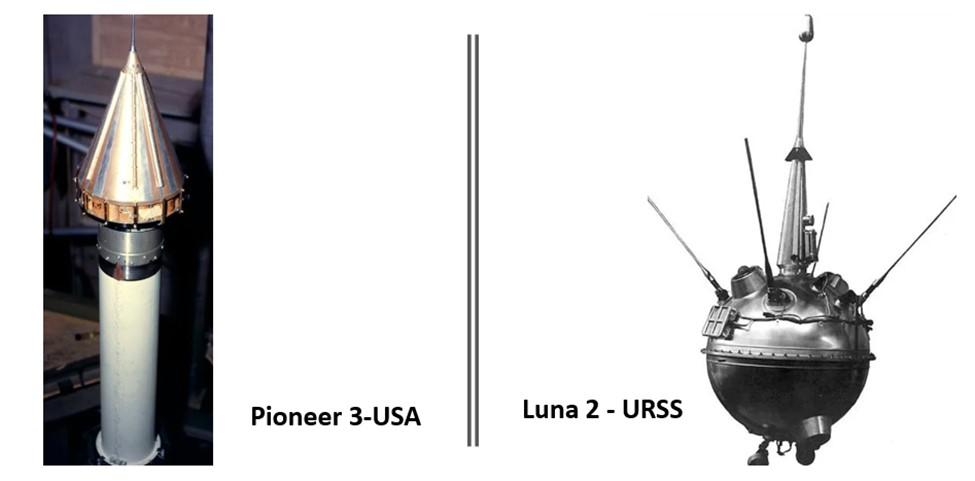
The probe weighed only 6 kg and only carried a transmitter with a tiny luminosity sensor that would be triggered after its lunar flyby, since American capabilities were still very far behind those of the USSR.
For once, Pioneer 4's launch went smoothly, and the little probe was already moving toward the Moon. However, the crews only discovered a small problem after the rocket had already taken off, meaning that the flyby would take place at an altitude of more than 50,000 kilometers, which was sufficient to declare success but insufficient to activate the photometric sensor.
Nevertheless, the new American agency established in 1958 seemed to pick up the challenge, considering the Soviet victory in January. But to no avail.
Parallel to this, Luna 2 collided with the Moon after 33 hours and 30 minutes of flight. A piece of an artificial spacecraft had made it to another celestial planet for the first time.
“To catch the reader's attention, place an interesting sentence or quote from the story here.” Space Race 2.0 Page 5
It signaled the start of a humiliating moment for the United States at the end of the summer of 1959; the country would still have to deal with significant failures in space.
Yuri Gagarin, the first human to travel into space (April 12, 1961)
https://youtu.be/KANuFlelQ5k?t=2 – a must watch!
However, with a string of firsts in 1964, including the first lunar landing for a research vehicle mission, NASA’s prestige was restored. For further information, see NASA History, 1958–1998.
https://history.nasa.gov/40thann/define.htm#:~:text=1964%20NASA%20pilot%20Joseph% 20Walker,on%20the%20Moon%20in%20the
A significant achievement was the Gemini program in Earth orbit, which was followed by the Apollo lunar program, which resulted in the first American astronauts stepping foot on the Moon on July 24, 1969.
The Soviets were completely humiliated this time, and they never even got close to sending a cosmonaut to the Moon or any other planetary body.
Their failure was confirmed by the demise of the Soviet Union. The USA held the top position in space – until now, the Space 2.0 new epoch.
Page 6 Space Race 2.0
………………………………………………………...
THE 1967 OUTER SPACE TREATY
On December 19, 1966, 189 nations approved the UN Treaty on Principles Governing the Activities of States in the Exploration and Use of Outer Space, including the Moon and Other Celestial Bodies.
The Outer Space Treaty offers the fundamental guidelines for international space law, and includes the following formal tenets:
the exploration and use of outer space shall be carried out for the benefit and in the interests of all countries and shall be the province of all mankind.
outer space shall be free for exploration and use by all States.
outer space is not subject to national appropriation by claim of sovereignty, by means of use or occupation, or by any other means.
States shall not place nuclear weapons or other weapons of mass destruction in orbit or on celestial bodies or station them in outer space in any other manner.
the Moon and other celestial bodies shall be used exclusively for peaceful purposes.
astronauts shall be regarded as the envoys of mankind.
States shall be responsible for national space activities whether carried out by governmental or non-governmental entities.
States shall be liable for damage caused by their space objects; and States shall avoid harmful contamination of space and celestial bodies.
Latest notifications update on https://www.unoosa.org/oosa/en/ourwork/spacelaw/treaties/status/index.html
Something of an anecdote today but a huge political row at the time. Who signed the treaty? The Republic of China i.e., Taiwan. Why? Well, remember that the PRC (People’s Republic of China) was not yet officially recognized by USA (and many others).
What happened next? The PRC would become the fifth country to put a satellite in orbit when it launched its first satellite, Dong Fang Hong 1, in April 1970 using a Long March 1 rocket.
And they deposited an instrument of ratification in that year proving their capacity, but it was ratified only in 1979.
The PRC called it “usurpation” by Taiwan and with a waiting time “humiliation” of 8 years. It would not be the last snub for the young space nation!
“To catch the reader's attention, place an interesting sentence or quote from the story here.” Space Race 2.0 Page 7
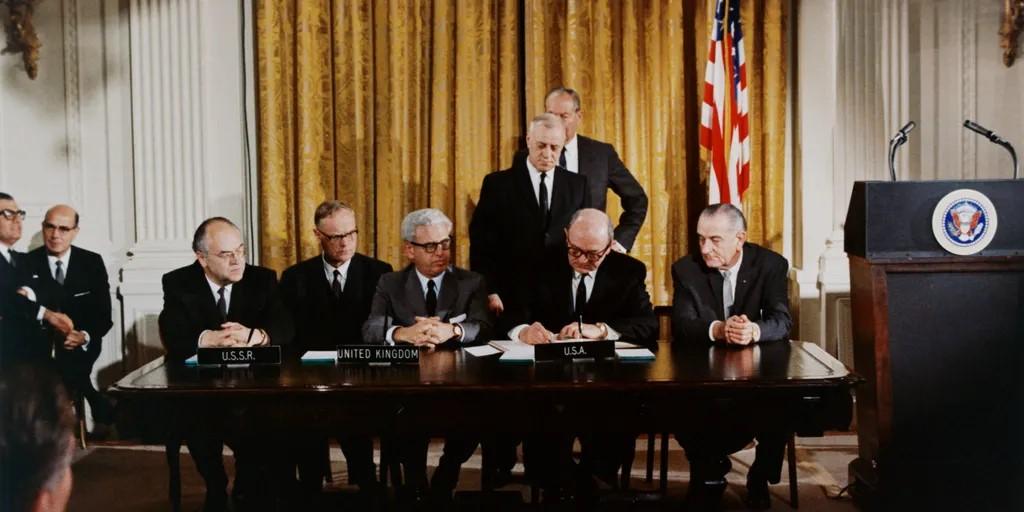

Page 8 Space Race 2.0
27 th January 1967 first ratification by Lyndon Johnson administration (Last on right) and the United Kingdom Treaty report prior ratification
THE THREE SNUBS
The three snubs that pushed China’s nationalism into space were either mistakes due to circumstances or classic realpolitik.
The United Nations treaty on space, which Taiwan signed in 1969 for “all” of China, was the first serious snub.
Chairman Mao was slow to respond in those days, and the relevant chapter on the Outer Space Treaty just explained why.
An invitation to visit the International Space Station (ISS) has never been extended to China, in contrast to 263 visitors from 20 other nations.
The U.S. did not want them to be there – the second snub explained as a absence of scientific sharing.
Further, Section 1340 of the 2011 Department of Defense budget which established policies and funding for defense and other U.S. Government agencies for that year states that NASA may not use funds from that division to collaborate in any way with China unless a law specifically authorizes it.
To expressly forbid any sort of collaboration with any state-controlled or private enterprise in the space sector, the U.S. Congress introduced a bill in 2011, called the “Wolf” amendment.
The third snub is very recent. The Chinese Space Station (CSS) is now fully built and has been functioning since November 2022.
All international space agencies were cordially invited by the China National Space Administration (CNSA) to deploy astronauts and visit without restrictions.
JAXA, the Japanese space agency, never responded, which is geopolitically understandable.
The European Space Agency’s (ESA) director general said on January 26, 2023, that the organization lacked the political will and financial resources to deploy humans to China's space station. Veiled diplomatic terms to say thanks, but no thanks!
Since Chinese astronaut Ye Guangfu took part in the ESA's Cooperative Adventure for Valuing and Exercising Human Behavior and Performance Skills (CAVES) astronaut training course a year before, this took CNSA by surprise – not least as ESA astronauts – Samantha Cristoforetti and Matthias Maurer – had trained in sea survival alongside 16 Chinese counterparts in 2017 off the coast of Yantai while also learning Chinese in order to be ready to fly to the Chinese station.
The interactions were a part of the strategy for later in the 2020s, when European astronauts would finally go to China's space station. But those ideas have now completely frozen down.
“To catch the reader's attention, place an interesting sentence or quote from the story here.” Space Race 2.0 Page 9
And during the International Astronautical Congress in September 2022, an ESA representative took part in a Chinese-led panel discussion on the potential for international collaboration for China's lunar and deep space exploration efforts. Except they stayed mute all the time thanks to government instructions!
However, these three snubs have had the opposite effect, igniting Chinese aspirations even more.
China has been excluded from U.S.-led international operations, but this has not stopped it from developing its own parallel capabilities.
Okay, to be fully objective, 2019 saw NASA and CNSA exceptionally working together to explore the Moon for science, as shown by China's Chang'e 4 rover, which arrived on the Moon's far side that year.
In their first significant joint action in eight years, NASA and CNSA worked together to observe the Chinese rover's landing. NASA watched the lander and relayed the photographs it generated, while CNSA gave the intended landing area and timing. This mission was made possible by NASA's certification to Congress that this activity "did not pose a risk of resulting in the transfer of technology, data, or other information...with China” and did not involve knowing interactions with officials who have been determined by the U.S. to have direct involvement with violations of human rights.
NASA stipulated that any important discoveries would be made public worldwide to prevent the sharing of private data between the two countries. But this was a one-off and an outlier – and cooperation stopped brutally hereafter. Other nations who want a long-term human presence in low Earth orbit may be persuaded to collaborate with China on the CSS since the ISS is set to be retired in 2031, and the China orbital station has a lifespan of at least up to 2043, thus filling an evident loophole.
China is putting itself in a position to be the ‘go to’ partner country for the next space exploration missions thanks to its expanding commercial space industry, which promises to provide regular launches to international companies at advantageous costs.
NASA, on its side, is aggressively promoting international cooperation as a crucial component of its ambitions as it ushers in a new age of exploration with its Moon-to -Mars initiatives.
Partnerships with Canada, Australia, the ESA, and Japan are being sought for the Artemis and Lunar Gateway missions.
Page 10 Space Race 2.0
An evident strategic error – that will only advance China's objectives – was to exclude them from participation in these initiatives.
Chinese space research plans have accelerated because of their rejection in any space collaboration, thus posing a severe threat to American leadership in this crucial area of exploration.
The "Wolf" Amendment has neither hindered Chinese space goals or changed China's attitude toward human rights. Instead, it has merely complicated U.S. ties with China and left room for a profoundly serious rival to NASA's dominance in space conquest and research.

“To catch the reader's attention, place an interesting sentence or quote from the story here.” Space Race 2.0 Page 11
The 6 Taikonauts in the present CSS orbital station
THE PRC IN SPACE: THE EARLY DAYS, 1958-1999
The Chinese space program's technical foundations date back to the 1950s, when China started developing its first ballistic missile and rocket programs in response to initial perceived threats and with assistance from the newly‑allied Soviet Union.
Mao Zedong resolved to make China an equal to the superpowers at the National Congress of the Chinese Communist Party on May 17, 1958, in response to the Soviet Union's launch of Sputnik 1, the first man-made satellite, on October 4, 1957.
The Soviet Union and China had collaborated on a technology transfer program during the period of friendly Sino-Soviet ties in the 1950s, which helped China launch its space program.
However, due to ideological differences in Marxism and different reactions to the legacy of Stalin, the once-friendly ties between the two nations quickly deteriorated into hostility.
After the Sino-Soviet split in 1960, all Soviet technical aid was unexpectedly cut off, leaving Chinese scientists to go on with their project with very few resources and limited expertise.
As the space race between the two superpowers reached its climax with the conquest of the Moon, Mao and Zhou Enlai decided on July 14, 1967, that the PRC should not be left behind, and started China's own crewed space program.
The China Space Medical Institute was the first government body to start the selection of astronauts, called “Taikonaut” in China.
https://en.wikipedia.org/wiki/List_of_Chinese_astronauts
The 2nd Bureau of Mechanic-Electrical Industry in Shanghai began work on the Feng Bao 1, China's first heavy-lift satellite launch vehicle, in August 1969.
On November 16, 1969, a failed effort was made to utilize this vehicle to launch a Chinese satellite, attempting to do so prior to Japan's first attempt.
On April 24, 1970, the second attempt to launch a satellite was successful.
However, there was a lot to catch up on as NASA astronauts were already on the Moon! The crewed space program accelerated, with 19 astronauts chosen, but the program was stopped due to political unrest after Mao Zedong's death. He was succeeded by Deng Xiaoping who had other priorities, notably economic concerns for the people.
Page 12 Space Race 2.0
Early in the 1990s, with the demise of the Soviet Union, Russia and China began to cooperate again. In 1994, China bought Russian aerospace technology to advance its human spaceflight capabilities, and in 1995, a contract for the transfer of Russian Soyuz spacecraft technology to China was signed. The deal included the supply of Soyuz capsules, life support equipment, docking systems, and space suits, as well as timetables for astronaut training.
In June 1993, the CNSA combined all the formerly separate agencies into a single replica of the Western space agencies.
In November 1999, after the 50th anniversary of the PRC's creation, China launched the Shenzhou 1 spacecraft, which was retrieved after a 21-hour mission.
It was China's first test of an unmanned human space mission. Just a warmup of what was coming in the following century.
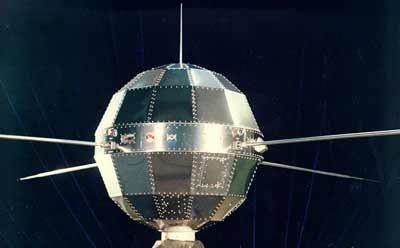
Page 13 Space Race 2.0
DONG FANGh ONG 1 -FIRST SATELLITE LAUNCHED ON 24.4.1970
CHINA’S « OFFICIAL » VISION FOR SPACE
On December 20, 2022, in a speech that was televised by China Central Television, Wu Yansheng, the chairman of the nation's primary space contractor, China Aerospace Science and Technology Corporation (CASC), listed several objectives. A crewed lunar landing was among them, along with other exploration and transportation objectives. The speech also emphasized the need to construct a space governance system and develop on-orbit service capabilities.
The strategies are described as adhering to General Secretary of the Communist Party of China Xi Jinping's strategy to create a powerful space country. The initiative evolved as part of a larger Xi-led push for economic and technical independence at a time when the United States is moving to ‘decouple’ its economic ties with China.
The primary goal is for China to become a major aerospace power by 2030 and a fully integrated space power by 2045. China will become the world leader in space technology by 2045, according to CASC. This goal is considered as an evident threat to US space dominance up to now.
Major topics in Wu’s speech included space travel, space exploration, governance, and national civil space infrastructure, which most likely combines Earth observation, telecommunications, navigation, and positioning constellations and services, as well as other technologies, to provide worldwide coverage. He also spoke about the need to offer affordable, quick, and dependable access to space, and space transportation that places an emphasis on constructing intelligent, reusable launch vehicles.
By continuing to “upgrade and improve our space infrastructure, build an in orbit service and maintenance system, actively promote the construction of a next generation space infrastructure system,” and achieving effective, affordable transportation by 2030, CASC seeks to comprehensively improve China’s capacity in space.
Reusable rockets, such as the Long March 8R, Long March 9, and suborbital and orbital spacecraft, are already being developed with the support of military industry. A system of space law and environment regulation, as well as the development of capacities for space domain awareness and space trash cleanup, were also mentioned in the presentation.
“To catch the reader's attention, place an interesting sentence or quote from the story here.” Space Race 2.0 Page 14
Wu acknowledged that there are difficulties, particularly those brought about by the U.S. “restarting great power competition,” the so-called “Wolf clause” excluding China from the ISS project, and the inclusion of Chinese aerospace companies on U.S. export blacklists.
Wu also believes that the U.S. is attempting to grab critical resources, such as certain orbits, locations, and radio frequencies. The presentation emphasizes both long-term objectives with what seems to be strong governmental support and the fact that China is more concerned with achieving goals and building capabilities on its own than heavily depending on foreign collaboration.

Space Race 2.0 Page 15
The International Lunar Research Station (ILRS) would be built in the 2030s after three Chang'e robotic landing missions during this decade. Wu Yansheng announced plans for a crewed lunar landing by that year.
A Mars sample return mission is also being planned by China for the "next 10 to 15 years," which raises the possibility that the Red Planet's material delivery to Earth in 2031 may be postponed.
There are further missions that are aimed towards Jupiter, Uranus. The "Miyin Project," an exoplanet research initiative run by CASC, is also referenced.
This year, CASC manufactured launched the three modules of China's Tiangong space station into low Earth orbit. To start out with a second core module and docking hub, China also intends to extend Tiangong.
Grand plans for space have already been published by CASC, including a roadmap for space travel through 2045 and ambitions to create a $10 trillion Earth-moon economic zone.
After completing 54 flights in 2022, China's leading space contractor and manufacturer of the Long March rocket, CASC, revealed that it is aiming more than 60 launches this year.

More than 200 spacecraft will be launched by CASC in total, while only a handful of the intended missions are indicated. launching satellites for China's version of the GPS navigation and positioning system, Beidou, weather, a geostationary synthetic aperture radar, and three backup spacecraft
In terms of launch activity in 2022, China was second only to the United States .According to CASC, China launched 217.39 tons (197.21 metric tons) of cargo into orbit in 2022, compared to the United States, which launched 809.59 tons (734.45 metric tons).
“To catch the reader's attention, place an interesting sentence or quote from the story here.” Space Race 2.0 Page 16
A BRAND NEWS ORBITAL SPACE STATION
The nation now possesses a permanent orbital platform with the construction of the “Tiangong” station, of which building was finished when China launched the last component on October 31, 2022.
The station can now hold up to six people at once thanks to the 18-meter lab module, known as “Mengtian” (which translates to "dreaming of the skies"). Together with two other astronauts, it now houses commander Chen Dong.
For China's quickly expanding space program, it's a big achievement – and since the Russian Mir station was deorbited in 2001, it is the ISS's first stable neighbor. For China's space program, this is significant. The lifespan of the ISS is rapidly approaching its end, planned for 2031, with the result that from then you'll just have the Chinese space station in orbit.
Tiangong's lifetime is expected to be between 15 and 20 years, with the potential of an extension, according to the Chinese space program.
Tiangong was constructed in China in only one and a half years, despite the fact that planning for the station started in 2011 with the launch of the first of two test versions.
The “Tianhe” core module was launched in April 2021, and the first astronauts touched down in June of the same year. The next module went online in July 2022, and the last one in January 2023.
The T-shaped station is comparable in size to Mir, the ground-breaking space station that functioned in the 1980s and 1990s. It has two lab modules attached to the core.
Although smaller than the ISS, it has several amenities that increase habitability and, therefore, astronaut productivity, with less clutter and more wireless technology, rather than having too much cabling like on the ISS.
The T-shape of Tiangong may restrict possible expansions, as will other considerations including the need to control energy use and eliminate waste heat.
“To catch the reader's attention, place an interesting sentence or quote from the story here.” Space Race 2.0 Page 17
Like the ISS, China's station will provide some avenues for collaboration via which other nations might send experiments and even personnel in the future to Tiangong.
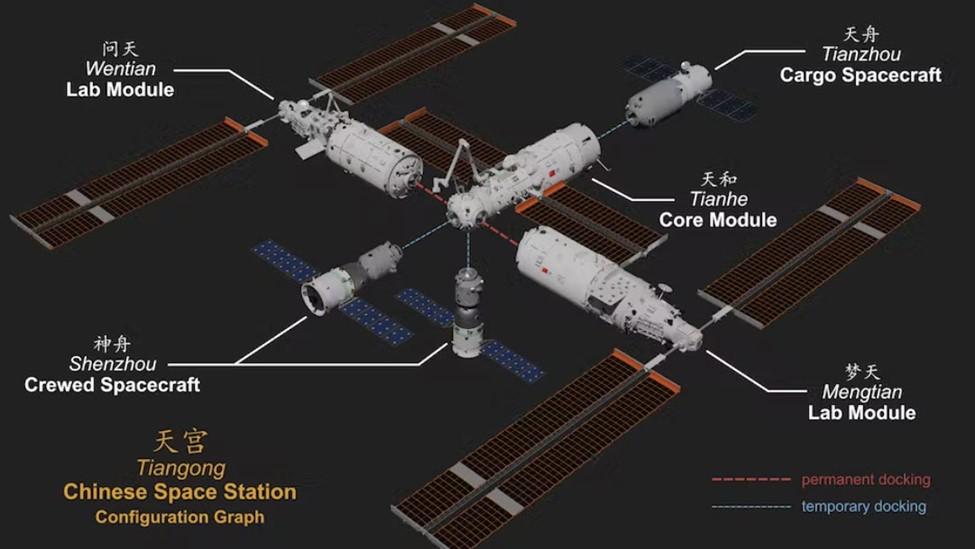
Chinese business partners may also participate by launching freight missions; it already has a Saudi Arabian experiment on board.
But China has different goals for Tiangong than the ISS, which needs the constant assistance and support of its partners.
The main goal is to demonstrate Chinese leadership and the fact that it is independent of the space agencies and businesses of other countries – and Tiangong's successful completion demonstrates that China is now one of a select few space powers rather than a rising star.
China now faces the same challenge as other nations: how to remove the waste generated by operating a space station. Most nations either attempt to dispose of their rocket bodies by reusing them or by conserving some fuel to enable a controlled descent into the atmosphere. This prevents them from falling back to Earth erratically or remaining in low Earth orbit, where they can endanger satellites and space stations.
“To catch the reader's attention, place an interesting sentence or quote from the story here.” Space Race 2.0 Page 18
Tiangong's completion will also have an impact on American geopolitics. The U.S. can't just assume that it’s the only big dog in space anymore. But space exploration and operating a space station can be done in several ways. The U.S. still wants to set the example for humanity's space exploration, not that of a totalitarian government like China. The U.S. regrets, of course, having ignored and snubbed them for so long.
For the first time since the Russian bear was vanquished, leaving just one participant in the game surrounded by smaller but capable other western space agencies, astro-politics are beginning to become fascinating again. For Americans, the space-based ‘evil’ has changed – and they will watch it very closely!

“To catch the reader's attention, place an interesting sentence or quote from the story here.” Space Race 2.0 Page 19
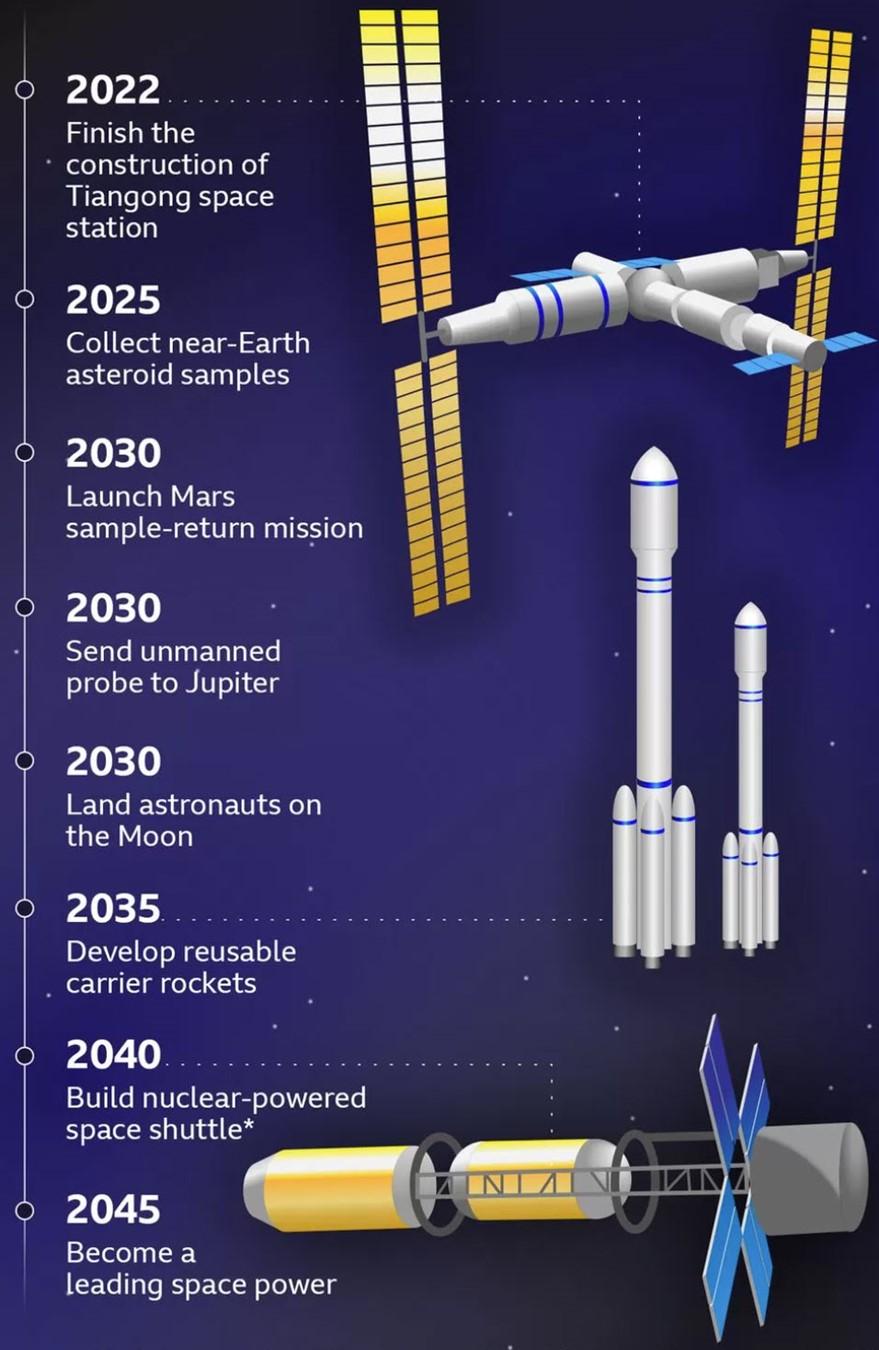
catch the reader's attention, place an interesting sentence or quote from the story here.” Space Race 2.0 Page 20
“To
WHAT IF CHINA LANDS ON THE MOON FIRST?
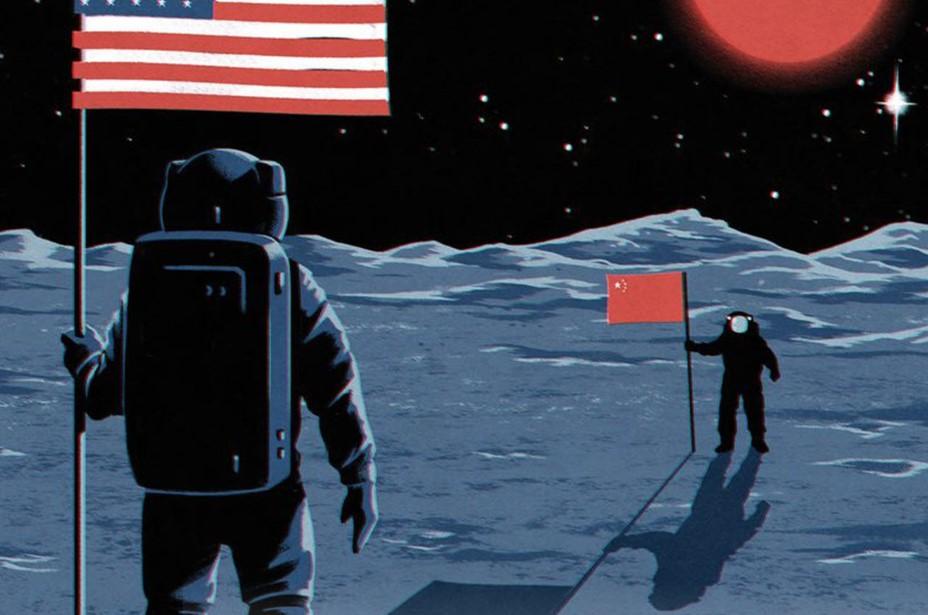
Recent warnings from NASA Administrator Bill Nelson about China's potential Moon claim should have pleased China this time!
They responded lightly, stating that China is going to space to advance technology, boost economic development, and raise people's standards of life, according to Yang Yuguang, a senior member of the International Astronautical Federation. Additionally, he said that China would go to the Moon anytime it pleased and would not obstruct anyone from doing the same.
In the coming years, China plans to establish an unmanned outpost at the South Pole of the Moon, followed by a human station. Yang tempered this, saying that the situation should not be seen as a "Chinese takeover" of the area.
And because of this, Mr. Yang’s space diplomacy is timid wishful thinking.
Now, China is a signatory to the Outer Space Treaty, which forbids any country from claiming the Moon. But objectively, the first nation to establish a base on the Moon will, nonetheless, have an edge over other nations, particularly if they aim for the South Pole where water has been found.
This is also a link to hydrogen and the crucial Helium 3, that will be used to for small nuclear fusion on the Moon, or to cargo back to nuclear fusion plants on Earth.
“To catch the reader's attention, place an interesting sentence or quote from the story here.” Space Race 2.0 Page 21
China has recently been successful in putting rovers on the Moon and even Mars. The nation will shortly launch the “Xuntian” (Space Observer), a Hubble-like space telescope with a significant larger field of view.
An acceleration without doubt but among today's very smart people, who can predict which nation, the United States or China, will be the first to formally operated a manned lunar base in...2028 at the earliest?
Pushing further the envelope!
In order to facilitate future activities on the lunar surface, China intends to install a constellation around the Moon.
According to Wu Yanhua, deputy director of the CNSA, who spoke to the Chinese media on April 24, 2022, China will take the lead in showcasing a modest, lunar relay communication and navigation system. This tiny constellation's first launch may occur in 2024. No other information was offered, although China's roadmap for lunar exploration and mission ideas provides some idea of the objectives.
The Chang'e-6 sample return mission and Chang'e-7, which contains an orbiter, lander, rover, and a tiny hopping spacecraft for searching for water ice in shadowed craters, would benefit immediately from the communications relay and navigation capabilities.
It is anticipated that Chang'e-6 and Chang'e-7 would aim for landings close to the lunar South Pole. A different orbit would be required to improve communications and enable sending larger volumes of data between Earth and the lunar South Pole, even though China has a relay satellite stationed in a halo orbit around Earth-Moon Lagrange Point 2 to facilitate communications with the Chang'e-4 lander and Yutu-2 rover on the lunar far side.
An inclined very elliptical orbit with a perilune of 300 kilometers and an apolune of 8,600 kilometers with an inclination of 54.8 degrees is one idea for a relay satellite to assist Chang'e-7. During its approximately 12-hour orbit, this would provide communication linkages between Earth and the lunar South Pole for a duration of more than 8 hours.
The Chang'e-8 spacecraft, built for testing 3-D printing technologies and in-situ resource exploitation, will come next on the path to the Chinese Lunar Research Station.
“To catch the reader's attention, place an interesting sentence or quote from the story here.” Space Race 2.0 Page 22
China is expected to build its lunar communications and navigation network through progressively enhancing capabilities as its lunar aspirations advance. Adding more satellites in comparable orbits would give continuous communications and navigation coverage.
After sending new lunar samples to Earth in late 2020’s, Chang'e-5 will travel to Sun-Earth Lagrange point before making a second trip to the Earth-Moon system later that year. According to amateur satellite trackers, the orbiter is now in a distant retrograde orbit around the Moon.

“To catch the reader's attention, place an interesting sentence or quote from the story here.” Space Race 2.0 Page 23
……………………………..
A MASSIVE NEW MOON ROCKET
The first test flight of China's massive new crew-launching Moon rocket should occur in 2027.
The three main stages of the launcher, each as huge as China's previously largest rocket, will be used: 90 meters high – meaning 8 meters short of NASA Artemis' rocket height. China will undoubtedly rectify that with pride!
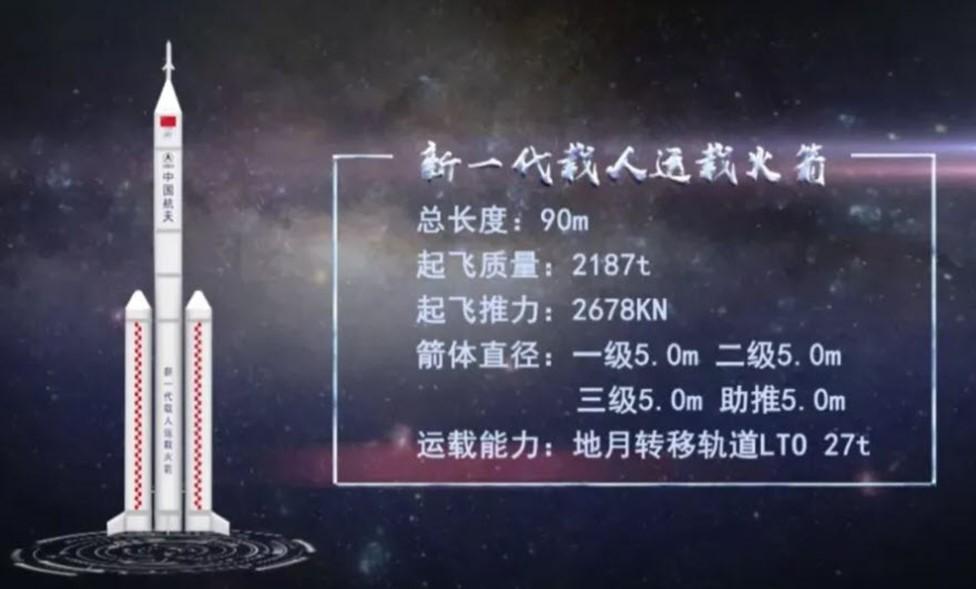
Upon launch, it will weigh 210 tons. Moreover, it will be able to launch 27 tons into lunar transfer orbit. In addition to its payload fairing, it has a launch escape mechanism as well.
The rocket might be utilized for two launches to conduct a quick crewed lunar landing mission.
The launcher has not yet been given a name; however, it is sometimes referred to as the Long March 5G or Long March 5DY (DY denoting "Dengyue," meaning Moon).
The rocket is also being created in a two-stage, single core form that will launch before the full-size model. The smaller model might transport a next generation crew spacecraft to China's recently built Tiangong space station in Earth orbit.
“To catch the reader's attention, place an interesting sentence or quote from the story here.” Space Race 2.0 Page 24
Reading that description, it is clearly a crude copy of the NASA Artemis with some latest technology improvements contrary to the very old Artemis concept. It should be respected, but not admired – contrary to Starship of the usual suspect “Elon”, which is the real game changer. Then again, it’s difficult to ask to the new team in the race to be innovative and at the same time show the speed that needs to rely on proven research. A nice try anyway, and, compared with Artemis, China might go and land its taikonaut on the Moon earlier – but then it will see rather quickly the limit of this old school rocket launcher model.

“To catch the reader's attention, place an interesting sentence or quote from the story here.” Space Race 2.0 Page 25
Present regular “workhorse” rocket Long March serie for Satellite launch
THE 10 TRILLION MOON ECONOMY QUESTION
China made the first-ever landing on the far side of the Moon (Chang'e 5) in January 2020.
However, a controversy began in autumn 2022 when China's Science and Technology Daily newspaper published a story stating that China aims to create a "space economic zone" between the Earth and the Moon that would be able to generate a $10 trillion economy annually for China by 2050.
In the weeks that followed, several took up the story and presented it as official policy and repeated the $10 trillion amount without hesitation.
Some of the reporting went even farther, equating the hypothetical zone with something like an exclusive economic zone, which gives coastal governments exclusive rights in terms of the exploitation and use of maritime resources.
The primary state-run space contractor for China, CASC, spoke at a seminar organized by the China Academy of Launch Vehicle Technology in Beijing.
To fully use the enormous economic potential space offers for China, the official Bao Weimin said that CASC aims to do research on highly dependable, affordable launch and in-space transportation.
To construct a "space economic zone" by the "middle of this century," he urged finishing fundamental research by 2030 and achieving significant strides in important, unidentified technologies by 2040.
At that moment, it was disturbing and clearly obvious that it was not the CNSA official statement – in fact, it reads more like a call for more resources as part of a bureaucratic budget fight – but it inflamed the adversaries in the West nevertheless!
However, given the very nature of the engagement, it seems to be an effort to increase political support for CASC's ongoing and future initiatives.
A long-range space transportation road map was published by CASC in late 2017 and included goals for a single-stage-to-orbit spaceplane, completely reusable launchers by 2035, and a "nuclear shuttle" by 2045. (Let’s not mention the Nuclear Flight Systems Definition study that the U.S. conducted… which began in 1969). (See: https://www.wired.com/2012/09/nuclear-flight-system-definition-studies1971/)
The proposals were largely regarded as technically challenging and ambitious. These developments seem to be the cornerstones of the space economic zone that Bao described at the Beijing event, together with efforts to increase space-based solar generating capabilities.
“To catch the reader's attention, place an interesting sentence or quote from the story here.” Space Race 2.0 Page 26
“To catch the reader's attention, place an interesting
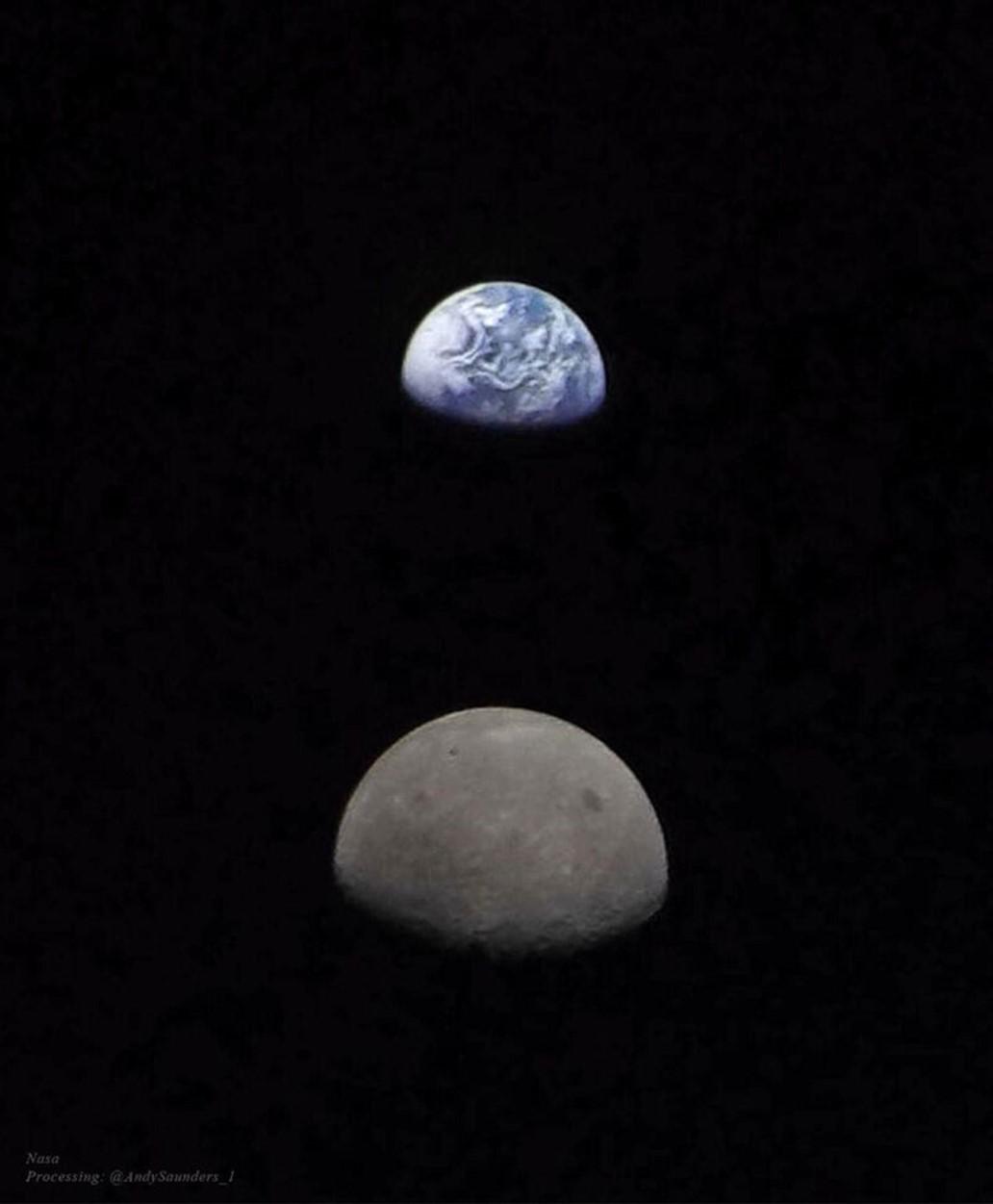
Space Race 2.0 Page 27
It seems that CASC is assuming the position of a government policy entrepreneur by emphasizing the significant economic and soft power benefits that CASC may provide to the country if given the proper degree of support. It is, however, in line with earlier policy statements made by Lt. Gen. Zhang Yuilin (of the People's Liberation Army Strategic Support Force), Chang'e lunar probe chief designer Wu Weiren, and lunar scientist Ye Peijin.
In 2018, they all warned that if China does not make use of its current spacefaring capabilities and establish a dominant presence on the Moon, others will.
Therefore, we can confidently infer that an official policy planning process is ongoing to accomplish this aim.
The idea that the Earth-Moon economy will be worth $10 trillion annually by 2050 is far-fetched and unrealistic, but it had the benefit of catching the public attention. In the last 30 years, there have been tremendous developments in spaceflight, particularly in the fields of satellite technology and reusable rocketry. However, the 30year-old projections for economic and spaceflight did not come to pass. What was the quote from Yogi Berra? “It’s tough to make predictions, especially about the future.”
The stakes are quite high. Through the creation of such a zone, China would be able to "establish the laws and create standard operating procedures of who has access.” To avoid being surprised by China's space accomplishments – like the 2015 landing on the far side of the Moon – the U.S. is carefully considering China's future space goals.
Meanwhile, these remarks serve as agenda fodder for other space agencies, much like the tit-for-tat space war 1.0 with USSR.
"Space will be a key engine of national political, economic, and military power for whichever countries will best organize and operate to maximize that potential," according to a new assessment from U.S. Space Command.
“To catch the reader's attention, place an interesting sentence or quote from the story here.” Space Race 2.0 Page 28
A NEW COLD WAR IN SPACE?
Washington and Beijing are now engaged in a space competition due to the collapse of Russia civil space industry sector, as all Russia’s financial efforts are now focused on the military side.
Chang'e-5 undoubtedly lacks Neil Armstrong's formula of charm and sensibility. But much like the American astronaut, this small robot made its way into Chinese history in December 2020 when it placed the first flag of its nation on the Moon. The Global Times, the official newspaper of the Chinese government, made a nonhumble statement: "Like Apollo 11 in the past, the Chinese flag encourages mankind now."
Geopolitics – called more appropriate astropolitics – is resurfacing 60 years after the Cold War space race between the USSR and the United States.
China has been gaining ground since the early 2000’s and has an incredibly ambitious agenda to challenge American dominance. A
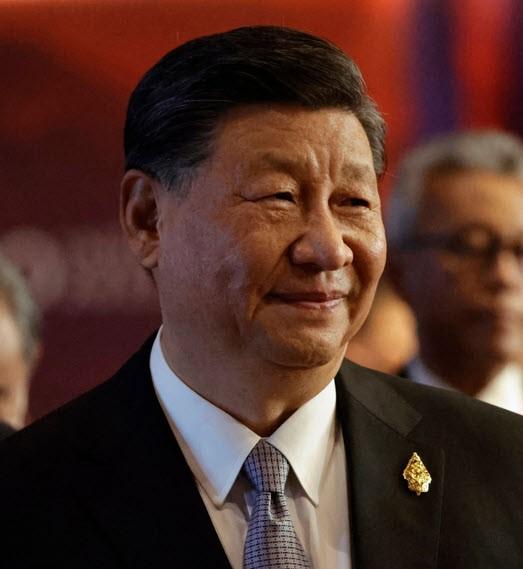
“To catch the reader's attention, place an interesting sentence or quote from the story here.” Space Race 2.0 Page 29
prudent smile , but clearly a confident one…
You will have also noted that throughout that time, Russia did nothing in the field of space as it spends everything it has on defense matters.
Three Russian cosmonaut were left stranded on the ISS due to mounting technical issues with their Soyouz capsule, and the mission to collect them is on the way. They will be the very last to have joined the ISS.
The previous Roscomos head Dmitry Rigozine also threatened Elon Musk in an irresponsible manner for political reasons unrelated to the space industry, which further damaged the Russian reputation (May 10 2022).
Beijing views space as a symbol of power beyond anything else. As a result, the CNSA is now the only clear rival to NASA. To commemorate the 100th anniversary of the formation of the People's Republic of China, China intends to surpass all other superpowers, including the United States, in all domains by the year 2049, and space is specifically one of those areas.
You also observe that while the UN flag has never been raised on the Moon, space exploration is always seen as a human endeavor.
The race to plant a flag first on any space object represents the conflict between China and the United States for narrative control and who will prevail in the space conquest storyline.
“To catch the reader's attention, place an interesting sentence or quote from the story here.” Space Race 2.0 Page 30
…………………………..
SPACE RACE 2.0- CHINA VS ALL SPACE AGENCIES
The establishment of a space station by 2020 was a primary objective of a covert plan for the Chinese government's space program that was started 30 years ago.
China's space programs were struggling at the time, with rocket failures in 1991, 1992, 1995, and again in 1996. The nation was still 11 years away from launching its first person into space.
China finished assembling its Tiangong space station in orbit in late October 2022, barely 22 months after the original deadline, unlike several other countries, whose ambitious spaceflight goals have ended up being many years behind schedule.
And on November 29, the Shenzhou 15 mission, which was launched from China's Jiuquan Satellite Launch Center in the heart of the Gobi Desert, sent three men to the space station to start a permanent habitation of the outpost.
These successes in human spaceflight, together with more recent missions to the Moon and Mars, strengthen the case that China is not for now “officially” engaging in a direct race with the United States for space supremacy, but is instead plodding along in a space marathon.
The nation's space authorities claim that China manufactures every part of their spacecraft. But they admit that their collaboration with their northern neighbor has benefited them over the years. And now they have completely ceased to cooperate – not for geopolitical considerations, but just out of pride since everything shall now be created entirely in China. Period.
Thousands of fans had gathered in the protective vicinity of the launch pad and millions were watching on outside huge screens in the major cities.
The Chinese space station, usually known by its abbreviation CSS and the Chinese name Tiangong ("Heavenly Palace"), is close to 100 tons in weight with only three modules.
That is a tiny bit less than the Mir space station, which the Soviet Union started constructing in space in 1986, and scarcely more than the American Skylab, which launched in 1973.
State media naively portrays Tiangong to the Chinese people as a “three-bedroom house in the sky”.
The ISS weighs around 450 tons, 16 modules, and has room for seven people to sleep.
Chinese authorities are attempting to make up for the Chinese space station's potential weight deficit by efficiently managing space, which is a nice way of saying they’re jamming personnel and experiments inside.
“To catch the reader's attention, place an interesting sentence or quote from the story here.” Space Race 2.0 Page 31
For the impact back home - they carried the flag everywhere even on Extravehicular opsChina's Shenzhou-15 crew conducts spacewalk (jwplayer.com)
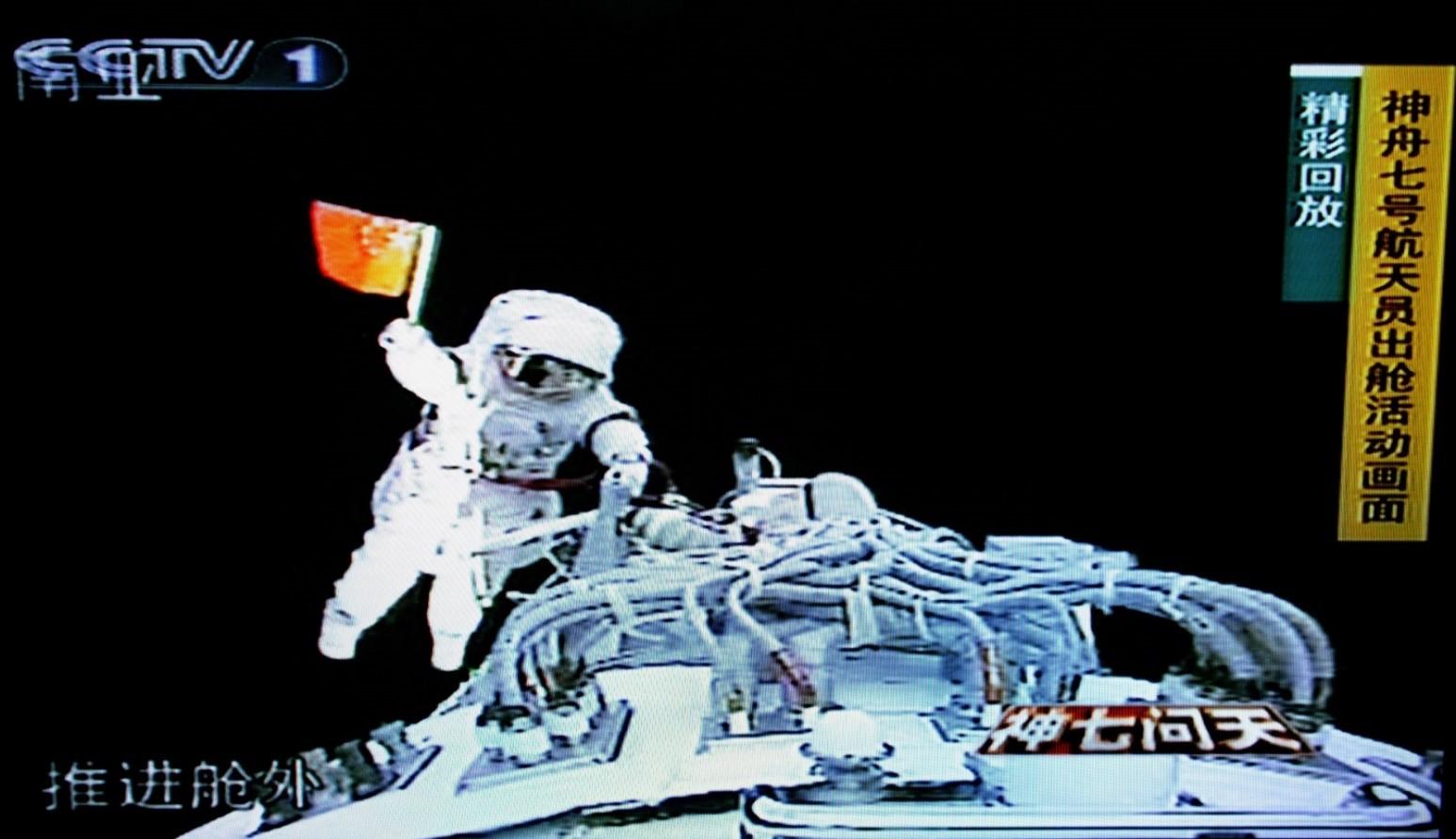
However, Western space specialists argued that the ISS is larger than it needs to be, especially considering the recent shrinking of computers and other scientific apparatus.
Effectively doing some basic math, with efficient space management, the Chinese space station will offer four-fifths as many racks for experiments as the ISS!
The station's primary purpose is to conduct research on space living. More than 1,000 experiments are planned for the next 10 years with an emphasis on understanding the growth and development of many kinds of plants, animals, and microbes.
All the future Chinese space missions to the Moon and beyond will be supported by Tiangong and the research conducted there.
“To catch the reader's attention, place an interesting Space Race 2.0 Page 32
For instance, China intends to deploy the “Xuntian” space telescope in December 2023. With a resolution almost equivalent to that of the Hubble Space Telescope but a broader field of vision, this telescope will scan stars and supermassive black holes, among other tasks. Periodically, the telescope will dock with the station for maintenance.
Chinese space authorities have learned the benefits of creating reusable rockets and spacecraft by watching SpaceX. And they proclaim that they will be able to utilize re -entry capsules for their next generation of spacecraft within a few years. Reusable rocket technology development in China has gained even greater significance in the wake of harsh international condemnation of its Long March 5B rockets.
China launched each of the three modules of the Tiangong space station while allowing enormous core boosters from these rockets to go off course and crash to Earth, creating a chain of alarms worldwide accusing them of irresponsibility. By luck up to now nothing dramatic happened but every time it is a very risky return to Earth.
“To catch the reader's attention, place an interesting sentence or quote from the story here.” Space Race 2.0 Page 33
………………………….
EXPANSION OF SPACE AGENCIES WORLDWIDE
The European Space Agency (ESA), a global coalition of 22 European countries, the Chinese National Space Administration (CNSA), and the United States' NASA are among the prominent space programs on Earth, although they are by no means the only ones.
In fact, there are more than 70 space agencies in existence throughout the globe, mostly in developed nations with substantial budgets.
Among the players, Luxembourg is one of the most active. Not unexpected, given that the nation was already a leader in the GEO satellite sector. With SES-Astra, a TV Broadcaster with 11 Satellite. Furthermore, they are working on ambitious space initiatives for their country.

“To catch the reader's attention, place an interesting sentence or quote from the story here.” Space Race 2.0 Page 34
In addition, a growing number of privately run space organizations, mostly centered on space travel, are emerging, such as SpaceX and Blue Origin.
Regarding capabilities, space agencies come in a wide range. By the end of 2022, just 16 of the world's 70 space organizations had the capacity to launch a spacecraft into orbit, and only seven had landed probes on the Moon or Mars.
Italy, France – as independent space agencies than acting within the European ESA – India and Japan have in parallel of the four majors China, USA, Russia and ESA, the ability to send a probe in a ‘flyby’ mode to an extraterrestrial body like the Moon, Mars, or into deep space.
Only three of them now have the capability to launch people into space and to the Moon. NASA succeeded in this latter feat on six separate occasions between 1969 and 1972, making it the only country to have done so to this point.
In favor of a closer partnership with NASA, Europe's ESA long ago gave up its plans to launch human spaceflight alone.
The genuine space race pits the advancement of the Chinese space agency against a coalition of space agencies from China, Europe, Japan, South Korea, Australia, Brazil, Israel and other small but still relevant nations.
The Indian Space Research Organization (ISRO) is hesitant to work with anybody and eventually does it alone, with varying degrees of success. Yet pride, rather than actual accomplishments that their people may not fully comprehend, is the most crucial element for this nation.
Russia is helpful and eager to assist China. Due to their de facto diminished skill and funding that has been diverted entirely to military endeavors, China has rebuked them “politely” due to their early days in space cooperation.
China vs the “rest of the world” is what it ultimately comes down to.
Knowing them well enough, I can say that China views the past snubs with resentment and that I am quite certain they are extremely proud of the international cooperation impasse, which gives them an added incentive that will make the race exciting to watch!
You are asking yourself the evident question. Why did the Americans stop sending astronauts to the Moon for 54 years and will be possibly returning only after 60 years?
They were entrenched there with a totally dominant position, and instead they are now suddenly concerned by a Second Space race!
Well, domestic politics, presidential changes, other wars on the ground to fight (Iraq, Afghanistan, Syria) have distracted budgets and political will.
At the end of the day, it is the rise of China that has kicked them to not let space be totally opened to a new adversary.
The Americans are back with all the western agencies on their side. Will it be sufficient? On paper yes, but national pride is a higher motivation for China.
A important moral is that space has been lost by NASA all over these lost years. It is going to be interesting to watch closely.
“To catch the reader's attention, place an interesting sentence or quote from the story here.” Space Race 2.0 Page 35
ARTEMIS 1 SLS MISSION FIRST CONCLUSION
After so many fruitless efforts, would Artemis ever learn to fly? That was the question we were asking in our June 2022 issue number 13, "Back to the Moon."
On November 16, 2022, after five failed technical attempts, the Space Launch System's (SLS) lunar mega-rocket launched impressively for the very first time.
The U.S. space program had a memorable day on that day. If the SLS had been unable to carry out its task launch the spacecraft Orion into orbit everything may have come to an end there.

Nevertheless, the Artemis I mission was successfully completed in front of our worried eyes.
The Artemis I mission had been completed by the time the Orion spacecraft came back to Earth on December 11. Recall that this mission was vacant, unoccupied, and included only mannequins conveying varied experiences.
The lives of NASA's astronauts would not be put in danger while traveling in an untested spacecraft and launch vehicle. The purpose of Artemis I was to qualify everything, and the facts seem to be in support of this.
https://youtu.be/aWCCNYJV3Zw
“To catch the reader's attention, place an interesting sentence or quote from the story here.” Space Race 2.0 Page 36
Lift off to the Moon – 25th November 2022
Only if conclusive flight data resolved every single point of technical concern will NASA give the go-ahead for the human mission, Artemis II.
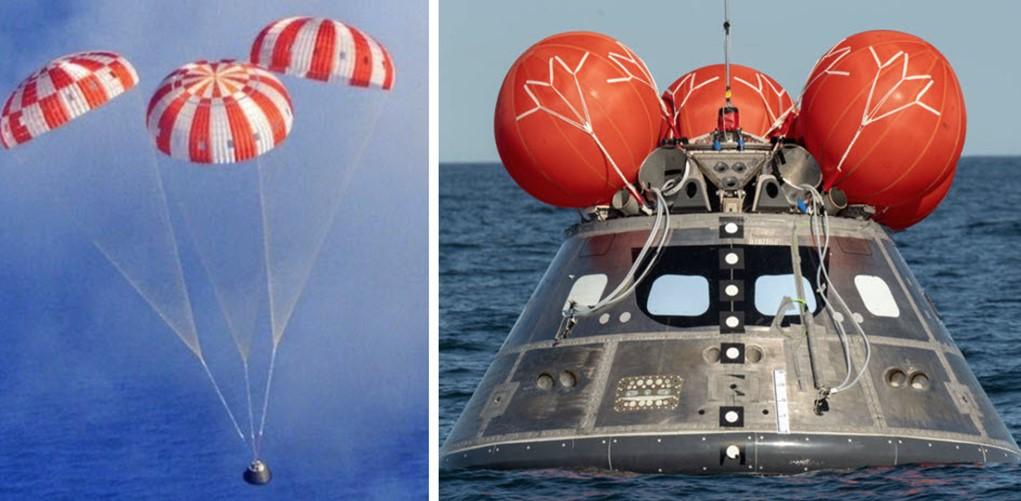
During the flight and pre-launch stages of the SLS, the crews gathered no less than 4 gigabytes of data and video from different onboard cameras. In addition, there are about 31 gigabytes of ground-based picture data.
The central block of the upper stage ICPS and the Orion spacecraft worked flawlessly, and the SLS's primary component operated well during the whole of its mission.
A tiny inaccuracy of just three kilometers, which is still within acceptable limits, was found in the transfer orbit where the ICPS and Orion were deployed. The insertion into translunar orbit later in the trip was described as "nearly perfect."
The mega-rocket operated "in line with or better than performance expectations," according to NASA.
The test seems to be successful – however, it is worth noting that these findings, which NASA reported on January 27, are preliminary and that the data processing is not complete. The final report (to be published at an unknown time at this date of writing, March 1, 2023) will make the conclusive decision.
“To catch the reader's attention, place an interesting sentence or quote from the story here.” Space Race 2.0 Page 37
The Orion spacecraft, which was previously tested with Artemis I, will determine if Artemis II gets its last approval. The human capsule of the spacecraft has been transferred to Cape Canaveral's Kennedy Space Center for analysis since its landing on December 11, 2022.
NASA is now getting ready for Artemis II. At the Kennedy Space Center, the Orion spacecraft's two modules are being joined, and the launch crawler is becoming better. The chosen crew will be made public by NASA in the next months. The first human mission, Artemis II, will launch in 2024 and orbit our natural satellite.
Astronauts will land on the Moon with the Artemis III mission at a date in the early range of 2026 or latest in 2028.
This will be specified on the return of Artemis II, planned for 2024, with a close eye on Chinese progress in parallel!
“To catch the reader's attention, place an interesting sentence or quote from the story here.” Space Race 2.0 Page 38
…………………………...
SPACE X ROCKETS, THE “SPACE” FORD.T OF OUR TIMES
After two decades of slow development, the Soviet Union was able to launch 64 different R-7 workhorse rocket types in 1980. A record-breaking 60 of those launches were successful, establishing a mark that has gone unbroken for decades.
The only rocket family to ever threaten its own record was the R-7 family, which managed 55 successful launches in 1988. However, the R-7 family's launch cadence, which was mainly dependent on disposable Cold War reconnaissance satellites, fell with the collapse of the Soviet Union and has never recovered.
The R-7 series has not found a credible rival for its yearly launch cadence record until 2022, 40 years later.
One of the strongest conceivable condemnations of the relative stagnation American space launch capabilities encountered following the Apollo Program is that the challenger is a private firm that had to legally push its way into areas of the U.S. launch sector.
But it also highlights SpaceX's accomplishment, which was made possible by using rockets that were novel until the late 2000s.
SpaceX has broken a 42-year-old record with its 61st and final Falcon rocket launch of 2022.
There is a single primary factor that has been fueling the current increase in SpaceX's launch cadence, much like the Soviet peak, a remarkable era during which the R-7 family successfully launched 1181 times in 22 years.
The driving force behind Falcon's ascent, however, is SpaceX's own network of Starlink internet satellites.

“To catch the reader's attention, place an interesting sentence or quote from the story here.” Space Race 2.0 Page 39
Comfort comparison !!
Starlink satellites have been the main payload on 66 of the previous 125 Falcon launches since operational missions got underway in November 2019: 17 of the 31 Falcon 9 launches that SpaceX carried out in 2021 were Starlink flights, with another 34 Starlink flights in 2022 alone.
With 61 Falcon launches in 2022, SpaceX almost doubled that annually. That yearly doubling is unlikely to happen again anytime soon, if ever, but CEO Elon Musk has nevertheless set a goal for SpaceX of 100 launches in 2023, which would represent a 64% increase from this year.

SpaceX might launch around 80 Falcon rockets in 2023 if SLC-4E operates at a cadence of 25 launches per year and LC-40 and LC-39A continue to function as-is. In the end, it's unlikely that the R-7 family's yearly cadence record will last until 2024 if SpaceX can continue the Falcon family's historically long run of successful launches and increase the uptime of its current pads. In addition, SpaceX has a direct (albeit challenging) route ahead.
SpaceX is unmistakably using big scale manufacturing, which is essential for cutting costs and doing consistent testing on every little aspect.
It resembles the Ford T of the early industrial era. Generate and supply continuously around-the-clock with the side effect that rocket launches are becoming routinely dull!
We were all expecting at least a little razmataz from space, but they’ve made the U.S. yawn.
“To catch the reader's attention, place an interesting sentence or quote from the story here.” Space Race 2.0 Page 40
LAST MINUTE STARSHIP LAUNCH
SpaceX test fired 31 of the 33 engines in the tall rocket booster of its Starship prototype on Thursday.
The milestone test, known as a "static fire," is the last significant challenge before SpaceX attempts to launch the almost 122 meters tall rocket into space. 24 meters higher than Artemis SLS and 32 meters than the CNSA Long March 5DY
After the test, the corporation tweeted that the engines in the Super Heavy booster's base fired for the "whole duration," or the anticipated amount of time.

In a following tweet, SpaceX's CEO Elon Musk said that one engine had been shut off prior to the test, and another engine had "stopped itself."There are still enough engines to enter orbit. said Musk.
We are now waiting the official launch that was planned for March but at the time of the Chronicle closing 22 March. No official announcement yet from Space X….
“To catch the reader's attention, place an interesting sentence or quote from the story here.” Space Race 2.0 Page 41
Raptor engines static fire test
EUROPE SPACE SETBACK
Three years beyond schedule, Ariane 6 will not launch until the end of 2023. For months, Vega C has been inaccessible. An unparalleled catastrophe for this sector has gripped Europe space agencies.
Guillaume Faury, executive chairman of Airbus, claims that the continent is "immersed in a very dangerous crisis." Airbus has made the decision to implement a "space security and defense policy."
The European Commission will provide further information on this plan in March. Since the situation is severe, it is necessary to act immediately.
The background: a new iteration of the little Italian Vega rocket, Vega C, failed to launch two satellites toward the end of 2022, and the replacement for Ariane 5 is now three years late. This timeline, however, is still subject to technological risks. Furthermore, unlike the United States, which has had SpaceX's Falcon 9 since 2015, Europe currently lacks an independent capability in reusable rockets. Ariane 6's first flight was postponed by two months, to the end of 2023.
The Europeans are losing their sovereignty in space, which is a must for any country aspiring to be a major space power. They run the danger of losing independent access to space for at least a while and having to rely instead on SpaceX's benevolence during that period.
A domestic launch option for European satellites is no longer available.
Too much of a delay might persuade clients to transfer to rivals, endangering Arianespace's order book. Rebuilding the business connection and trust is essential, and this is the key.
We still have two years of slowly moving forward. Stéphane Israel, President of Arianespace, acknowledges that Vega C likely will not be able to operate at full capacity until 2024 and that Ariane 6 won't achieve cruising speed until 2025.
He’s going to have a "constant communication with his consumers" in the interim. Meanwhile, "some people could delay if their efforts slide."
According to the CEO of Arianespace, "we will assist others in finding a solution with operators with whom we have historical relationships, such as the Indian space agency ISRO, the Japanese MHI, or the American ULA."
For astropolitical reasons they can't ask CNSA for a ride due to the collaboration ‘snub’ we explained earlier in this chronicle.
While we wait for Ariane 6, why not prolong Ariane 5?
“To catch the reader's attention, place an interesting sentence or quote from the story here.” Space Race 2.0 Page 42
The query is loaded with common sense. However, it is not feasible. The ESA (the program's development authority), CNES (in charge of the new launch pad), and Ariane Group (the manufacturer) were aware that the switch from Ariane 5 would be challenging when the Ariane 6 program was initiated in 2014 – particularly considering how constrained the original six-year plan was until the first flight.
For France, the program's major donor, Stéphane Israel comments that "maintaining Ariane 5 on the commercial market would have been simply too costly."
He says that the decision to discontinue making Ariane 5 was made in 2019 since it was no longer appropriate for the markets, and – of course – we had that reliable backup Soyuz launch in Guyana for the European satellites. Whoops.
The worst-case scenario really happened. Since Russia's invasion of Ukraine in February 2022, Vega C has been grounded and Europe can no longer rely on Soyuz. Even with the 2014 occupation of Crimea, geopolitical concerns never affected Russia's space cooperation until to this point. After the invasion of Ukraine, space has for the first time legally crossed over into the realm of international sanctions.
So, starting in 2019, Ariane Group planned the retirement of Ariane 5 with the establishment of a new business entity devoted to Ariane 6.
New 4.0 factories were created, some sites were updated or shuttered, and subcontractors received specialized training. Ariane 6 has been made at a price that is half that of Ariane 5 thanks to a thorough assessment of every aspect. Five Ariane 6 are being produced, while the last Ariane 5 was put together in 2022.
The five European institutional missions that Soyuz was supposed to carry out in 2023 are urgently trying to find a solution.
“To catch the reader's attention, place an interesting sentence or quote from the story here.” Space Race 2.0 Page 43
“To catch the reader's attention, place an interesting sentence or quote from the story here.”

Space Race 2.0 Page 44
The Euclid space telescope will be launched by SpaceX at ESA's request. To launch two Galileo satellites, the European Commission must decide whether to wait for Ariane 6 or use a different launch vehicle.
As for the Earth Care satellite, it must launch on Vega C as a consequence of collaboration between the ESA and its Japanese equivalent, JAXA. However, if the Italian rocket is unable to fly again this year, Japan may be tempted to launch it instead. Therefore, launchers outside of Europe profit from Europe's misfortunes.
Politicians and businessmen did not regard SpaceX at an early stage with much respect, nor did they understand that the paradigm in the domain of space was shifting from a state system to an abundance of private entities.
Europe was slow to grasp the New Space phenomena, which enabled cheaper prices and the commercialization of space via reusable rockets, constellations, micro launchers, in orbit services, and space tourism.
The European Union, state agencies, and ESA are just a few of the many decisionmaking entities that exist in Europe.
Complexity, sluggishness, and increased expenditures are caused by this. An international organization like the ESA, which is made up of 22 member nations, is unable to change the way the borders are drawn. The moment has come to establish a true European NASA.
- Do not ask me I am too direct,
and undiplomatic!
-
Geographic “balancing” must also stop. According to the ESA guidelines, each state is given a workload that is valued at the same amount as the program's financial commitment which implies duplication and complex logistics.
But despite its shortcomings, Europe’s role in space is not doomed and will overcome its obstacles. By promising a certain number of flights each year, the European Union has committed to supporting the operation of Ariane 6.
In any orbit, Ariane 6 is sufficient. It can take the place of both Ariane 5 and Soyuz. The EU has already placed orders for 13 Vega C and 28 Ariane 6, including 18 for Amazon's Kuiper constellation. For Ariane and Vega, 2022 was a year of recordbreaking sales. Stéphane Israel argues that they have already achieved commercial success on paper
Ariane 6 could launch human capsules into Moon and Earth orbit with a few modifications. With its livable pressurized modules, Thales Alenia Space (TAS) collaborates with practically all human flight projects across the globe.
TAS, and their direct colleague-competitor, Airbus Space, have made Europe a global leader in GEO communications satellites.
The majority of constellations, such One Web, include the two vendors as partners. And the greatest non-military expertise in the world is met by European Earth observation and research satellites.
“To catch the reader's attention, place an interesting sentence or quote from the story here.” Space Race 2.0 Page 45
We want Europeans to quit bickering over which country will get a larger share of contracts and instead band together tightly since the Chinese competition will not let anybody stay at the front for long!
“To catch the reader's attention, place an interesting sentence or quote from the story here.”

Space Race 2.0 Page 46
The Vega vehicle was lost 2.5 minutes into its latest mission (21.12.2022) from the Kourou spaceport in French Guiana.This was the third Vega failure in eight outings.
ISRO PLAY SOLO
A particularly noteworthy situation is India Space Agency. Like the Chinese space program, which was taught by Russian experts in its early years, they quickly gain independence with some stunning success and the typical classic failure. They made the same early decision as their neighbor counterpart to address all aspect of the space environment, including the manufacture of satellites, launchers of various sizes, and astronaut training, which have been few times at the ISS.
The fact that they do all of these duties with a shoestring budget of 1.5 billion euros is astounding (government allocation for financial year 2023-24)
In the year 2023, ISRO is expected to launch ambitious missions such as Aditya-L1 (to study the solar phenomenon and solar corona), Chandrayaan-3 (lunar landing attempt) and even various test flights as part of the “Gaganyaan” project, which eventually aims to put Indian astronauts in earth's orbit and get them back to the planet
Objectively speaking, their rockets and the infrastructure around them are not as stylish as space X, but they make up for it with creative brains that are constantly recruited out by western agencies.
One of their greatest accomplishments was the launch of 104 satellites with only one rocker (15.3.2017) With the “Mangalyaan” orbiter, they became the first on their maiden flight and the fourth space agency to circle Mars in 2014. Now that they are all fully committed to it, their third moon mission , planned for late 2023, will show that they are capable of wandering and landing safely on the moon.
They are in the crosshairs of Astro politics. Russian relationship must be maintained even if it is no longer very beneficial. Keep their eyes out for their "usual suspect" while continuing to appreciate some collaboration with European space organizations.
Finally, they will likely continue to act independently due to patriotic pride and strong technological capabilities. Go Solo ISRO, Go, Go !
“To catch the reader's attention, place an interesting sentence or quote from the story here.” Space Race 2.0 Page 47
“To catch the reader's attention, place an interesting sentence or quote from the story here.”
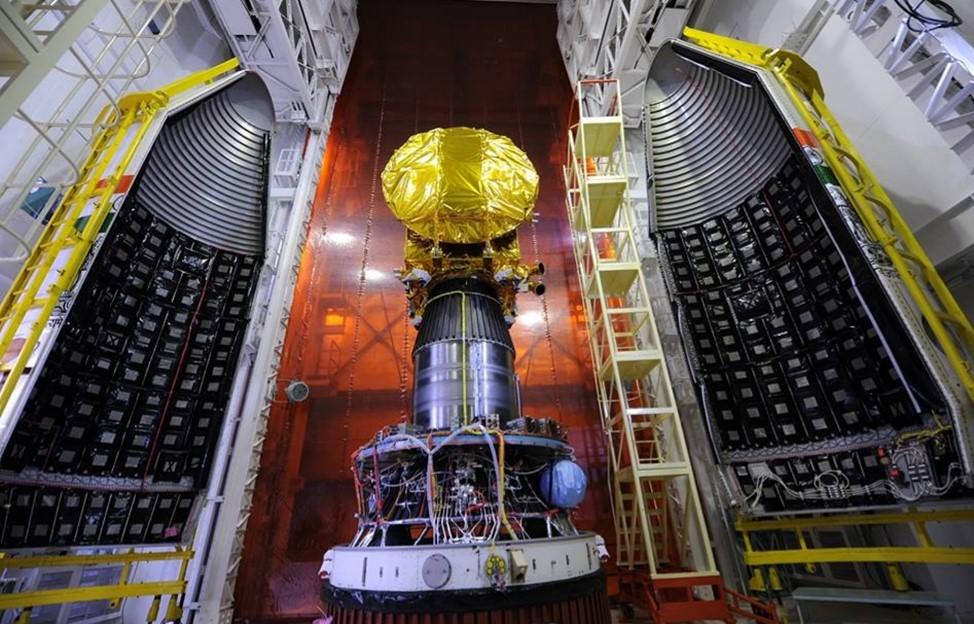

Space Race 2.0 Page 48
GSLV MK 3 launcher for Moon and Mars mission – Below Mars orbiter integration
JAPAN FINALLY TRYING HARDER
A big step has been made toward what would be a first for the country when a Japanese space startup launched its own private lander to the Moon atop a SpaceX rocket.
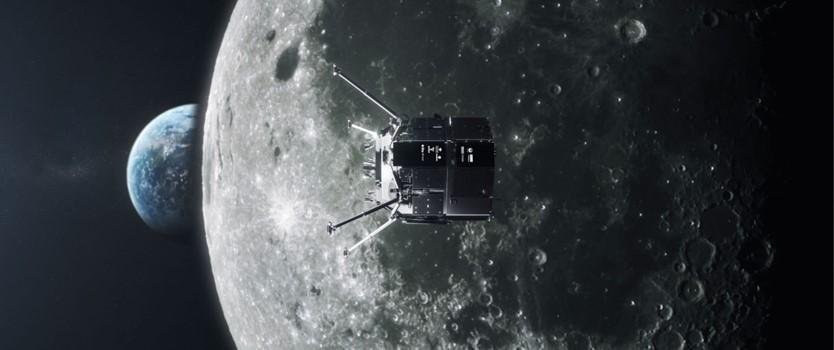
On December 12, 2022, the HAKUTO-R mission from the Tokyo-based ispace Inc launched successfully from Cape Canaveral, Florida.
It is traveling 1.6 million kilometers (one million miles) from Earth on a low-speed, low-energy trajectory to the Moon, where it will then turn around and settle by the end of April. View the Video https://youtu.be/q49UdKvoj8I
Prior to landing in the Atlas Crater, which is in the northeastern region of the Moon's near side and is more than 87km (54 miles) broad and little over 2km (1.2 miles) deep, the ispace vehicle wants to launch a tiny NASA satellite into lunar orbit to look for water deposits.
Two robotic rovers will be launched by the M1 lander: a four-wheeled United Arab Emirates’ vehicle called the Explorer Rashid, named after the grandfather of the Dubai royal family, and a two-wheeled, orange-sized robot from Japan's JAXA space agency.
Success on the mission would also mark an important turning point in US-Japan space collaboration at a time when China is becoming more competitive and rides on Russian rockets are no longer accessible after Russia's invasion of Ukraine.
The HAKUTO-R project, so named because it alludes to the “white rabbit” said to inhabit the Moon in Japanese mythology, is intended to be the first of many commercial and government payload deliveries, according to the corporation.
They intend to construct a permanently manned lunar colony by 2040 and have a contract with NASA to carry cargo to the Moon starting in 2025.
“To catch the reader's attention, place an interesting sentence or quote from the story here.” Space Race 2.0 Page 49
ARAB “REGIONAL” SPACE RACE: UAE vs KSA
The UAE is poised to commemorate a new accomplishment on its path to domination in the Arab regional space race: one of the four crew members who blasted off on March 2, 2023, heading for the ISS, is UAE astronaut Sultan Al Neyadi.

Al Neyadi follows in the footsteps of his countrywoman, Hazzaa Al Mansoori, who in 2019 completed an eight-day journey to the ISS and became the first Arab to go to space. Al Neyadi's stay will last six months.
There are other Arab countries with space aspirations besides the UAE, which plans to establish a Mars colony by the year 2117.
As part of the Ax-2 mission that it is carrying out with Houston-based Axiom, Saudi Arabia which established its first astronaut program last year plans to send two of its citizens to the ISS.
And more strikingly, Rayyanah Barnawi will become the first Saudi woman to travel to space at that time.
“To catch the reader's attention, place an interesting sentence or quote from the story here.” Space Race 2.0 Page 50
PRIVATELY-FUNDED COMMERCIAL ROCKET LAUNCHERS
The new flourishing space industry sponsored privately in the United States, Europe, and China cannot be compared with SPACE X, since it is in a league of its own and has grown to the point of being very dependent on NASA contracts.
China comes first because they are less well-known and are proud to display the energy of their private enterprises. But once again, we don't think they're very remarkable just yet!
Light-lift solid rocket launches have been attempted or accomplished by Chinese companies Landspace, i-Space (not to be confused with the Japanese ispace), OneSpace, and Galactic Energy, as well as spinoffs from massive state-owned corporations CASC (China Rocket), CASIC (Exspace), and the Chinese Academy of Sciences (CAS Space).
One of China's early and best-funded new commercial launch companies is Landspace. Its first attempt to launch the lighter and simpler solid-propellant Zhuque-1 failed. Yet it was significant since it was the first launch by a privately financed Chinese company.

The second launch, which was a very risky initial attempt using an innovative first, a methane Lox engine, was also unsuccessful.
It launched Zhuque-2 on December 14, 2022, but were unable to achieve orbit because the second stage engines cut off early after the second stage main engines seemed to have burned successfully.
Since then, i-Space and Galactic Energy have entered orbit, with the latter having launched its Ceres-1 solid rocket successfully four times. i-Space's three straight failures have increased the perceived pressure on private companies to succeed since their work is regarded as being related to how China's space programs are seen in general.
“To catch the reader's attention, place an interesting sentence or quote from the story here.” Space Race 2.0 Page 51
The two-stage, kerosene-liquid oxygen Pallas-1 rocket being developed by Galactic Energy is intended to transport 5,000 kilograms to LEO or 3,000 kg to a 700kilometer SSO. Both may debut in 2023.
The Chinese government has worked to promote the growth of the commercial space industry by providing governmental support and direction, such as rules for satellite launches and national initiatives encouraging the "satellite internet."
Money has also poured in in recent years from a combination of venture capital and government-linked investment organizations.
They seem to be highly dynamic, well-funded, and a little arrogant despite their failures, but they are not afraid to confront their Western counterparts who also experience ongoing failures.
In the space sector, it takes several efforts to perfect each rocket single ‘bolt’ before a genuine success is achieved.
They are clearly in their ‘teenager’ years, these private Chinese firms. When they get their space ‘driving license’, beware!
In Europe on Demand Rocket launches are coming!
A rocket to be propelled into orbit with nine engines, 50,000 liters of fuel, seven metric tons of thrust, and a speed of about eight kilometers per second. That's only for the first stage, according to Skyrora, a private launch vehicle supplier located in Scotland.
Across the globe, companies focused on space are increasingly developing their own technical mantra: innovative fuel + multiple engines + maximum thrust + 3-D and AI in support.
The majority are in the US, with Europe, China, and India lagging for the moment. But other governmental interest in space has also been rekindled; the UK wants to expand its market share to 10% by 2030, when the space business is anticipated to be worth $483 billion.
Depending on paperwork, Skyrora XL, which has a 315-kilogram payload capacity, should launch from the SaxaVord Spaceport in the Shetland Islands in 2023.
According to the Skyrora CEO, customers will probably be medium-size satellite firms that sell data to enterprises. There is a wealth of data that can be gathered from space, including data from optical and temperature sensors that are used to make real-time decisions in a variety of industries, including agriculture, traffic management, and insurance.
Similar services are provided by SpaceX, which charges $275,000 for firms to go to space on the Falcon 9. The fact that Skyrora enables customized launches is one of its main differentiators.
“To catch the reader's attention, place an interesting sentence or quote from the story here.” Space Race 2.0 Page 52
SpaceX is more akin to a bus company. You must share your time and space with other passengers to utilize it.
Skyrora resembles a taxi company. The aim is to reduce the time between client contact and liftoff to six months as opposed to the typical two-year wait for a trip with SpaceX, which gives customers time to arrange launch agreements and complete the paperwork. It predicts the ticket cost to be three times less that of SpaceX as a result.
The first stage of the 22.7-meter XL rocket, which is currently under construction, is what ignites and lifts the vehicle. The cargo is launched by the second stage of the rocket, which has finally finished its testing.

The vehicle, unlike other rockets, then incorporates a third stage, allowing the payload’s location to be precisely controlled up to 1,000 kilometers in height. Reusable first and second stages descending to Earth by parachute… on paper!
In October 2022, the Skylark L underwent a suborbital test flight and tried to take off from a mobile launchpad in Iceland. Due to a software glitch rather than a technical problem, it was forced to land 500 meters away in the Norwegian Sea.
Never say, “I told you so.” Going to orbit is still tough!
“To catch the reader's attention, place an interesting sentence or quote from the story here.” Space Race 2.0 Page 53
NUCLEAR PROPULSION FOR SPACE ROCKETS
Nuclear energy is often used for far space missions but in a way that avoids the need for an atom-splitting chain reaction: it harnesses the heat produced by radioactive materials.
One of these powers NASA’s Perseverance rover, which is now traveling across Mars.
A true nuclear rocket, however, is the vision of space enthusiasts. This rocket would use a fission reactor to power an engine that would be two to three times more powerful than any motor that relied on burning fossil fuels.
It might reduce travel times to Mars to six months instead of three years, with an orbital force at levels previously unheard-of, if it were launched into space on a regular rocket.
A joint effort named DRACO to create and test such a vehicle was launched in early 2023 by NASA and DARPA, the U.S. military’s advanced technology lab.
Since the NERVA effort to construct a nuclear rocket in the 1960s, these projects have occurred every ten to fifteen years.
They often encounter difficult technical problems, which cause them to fail. And there have never been any nuclear rocket demonstrations.
There are several benefits for engineers nowadays. The task is made simpler by developments in AI, materials science, manufacturing methods, and computer modeling.
A materials science challenge is to make the reactor as light as possible.
First is the moderator, a chemical that slows the neutrons for fuel release so they are more likely to hit with other fuel atoms and generate the desired chain reaction. These are used in fission reactors in addition to a radioactive solid fuel, in this instance high-assay low-enriched uranium.
Those components must be heat resistant to make the reactor feasible. When the reactor is operating, it will warm up highly pressured liquid hydrogen, which will then transform into gas and be fired out of a nozzle to power the vehicle.
The program’s directors prioritize safety and are fully aware of the concerns the public has over radioactivity. The good news is that until they are switched on, fission reactors are mostly inactive.
“To catch the reader's attention, place an interesting sentence or quote from the story here.” Space Race 2.0 Page 54
The first nuclear propulsion vehicle is expected to take flight in 2027. Other advantages to this project exist. It could provide fresh information for developing compact, effective power-generating reactors on Earth or the Moon. Effectively for future lunar and Mars colonies, NASA already has a pilot program to produce nuclear power as their energy feed.

In that grandiose future of space travel, Rolls-Royce Industries will play a role. Following a 2021 agreement to research potential nuclear power choices in space travel, it presented an early stage concept of a micro-nuclear reactor on January 27, 2023.
In a short explanation of the technology, Rolls-Royce stated that “each uranium particle is enclosed in various protective layers that operate as a containment system, enabling it to resist harsh circumstances.”
In general, issues with space fission or fusion power include astronaut safety, portability (since greater mass results in a more costly trip), and durability in a hostile environment.
However, nuclear power is from now on going to be a mainstay of space exploration.
“To catch the reader's attention, place an interesting Space Race 2.0 Page 55
Nuclear power on the Moon
The U.S. Department of Energy and NASA are collaborating to enhance nuclear technology in space.
Three design concept concepts for a fission surface power system have been chosen by the agencies and might be launched by the end of the decade for a lunar demonstration.

Future exploration conducted under the Artemis program might benefit from this technology.
Fission systems are dependable and may provide continuous power independent of location, the amount of sunlight available, and other natural environmental factors.
“To catch the reader's attention, place an interesting sentence or quote from the story here.” Space Race 2.0 Page 56
They are very tiny and lightweight in comparison to other power systems. Longduration expeditions to the Moon and Mars would be made possible by a demonstration of such technologies on the Moon.
NASA will get crucial industry data from the Phase 1 awards, which may help with the cooperative development of a fully flight-certified fission power system.
NASA’s development of nuclear propulsion systems that depend on reactors for electricity will also be aided by fission surface power technology. Missions to explore outer space may make use of these systems.
Jim Reuter, assistant administrator for NASA’s Space Technology Mission Directorate, stated that “new technology fuels our exploration of the Moon, Mars, and beyond.” We can build the foundation for our long-term human existence on other planets by creating these early concepts.
“To catch the reader's attention, place an interesting sentence or quote from the story here.” Space Race 2.0 Page 57
………………………….
LUNAR BASE PROJECTS
ESA Colony design
With the efforts being made, it is difficult to imagine that we won't be able to establish a colony on the Moon in the not-too-distant future. It seems that everyone who has an opinion on how such a settlement should be reached is participating in some capacity, even architecture companies.

A lunar colony idea has been submitted by the European Space Agency (ESA) and the architecture firm Skidmore, Owings & Merrill (SOM- USA).
The concept is a shell construction that can be brought to the Moon, set up there, and partially inflated either by on-site humans or by rovers controlled remotely from the planned Gateway lunar space station.
The design was chosen because it provides "the best conceivable volume to mass ratio," inflating to double its interior capacity. It could house four people for up to 300 days when completely deployed, and more of these units could be placed together to create a small metropolis.
Each reconfigurable building would have four floors and be situated close to the lunar South Pole on the tip of Shackleton crater. The Sun shines here virtually continuously, the view is spectacular with the Earth constantly in the sky, and of course, lunar ice water is close by. These factors led to the selection of that location.
“To catch the reader's attention, place an interesting sentence or quote from the story here.” Space Race 2.0 Page 58
NASA Artemis Moon base project
It will be the beginning of an even more ambitious project than sending humans back to the Moon when the first astronaut places their boots in the lunar soil in 202 (…) as part of Artemis III, assuming the current schedule holds.
NASA plans to build a base camp in one of the 12 preselected spots among the gray dust and craggy rocks of the Moon’s South Pole.
The Artemis missions will ultimately break Apollo 17’s record for the longest stay on the Moon (74 hours, 59 minutes, 38 seconds) thanks to this lunar outpost, which will also act as a base for more extensive research.
The camp will initially only support operations lasting a week or two, but as it expands and becomes more sophisticated, the agency intends to support personnel for up to two months at a time.
According to current ideas, a lunar cabin, an open-top rover like the ones used on the Apollo missions, and anything like an RV that would give mobility and enable astronauts to live and work away from the base for days or weeks at a period are all being considered.
The South Pole provides astronauts with two essential components for a lunar base: periods of constant sunlight and deep craters with depths that have been covered in darkness for billions of years. It sees up to two months of continuous light each year because of the Moon’s tilt with respect to the Sun, with the Sun orbiting just above the horizon the whole time.
NASA is considering the use of inflatable and modular structures to build bigger, more transportable, livable habitats on the Moon.
But a larger 3-D printer that will employ rock or lunar dust as its starting material is more inventive.
With the use of a device like this, a house might be built entirely from scratch or at least a basic model constructed and then improved upon using materials delivered from Earth.
Today, a test construction is being constructed in Houston using a prototype 3-D printer.
“To catch the reader's attention, place an interesting sentence or quote from the story here.” Space Race 2.0 Page 59

Space Race 2.0 Page 60
CNSA lunar base station
The ILRS is described as "a comprehensive scientific experiment base with the capability of long-term autonomous operations."
It is to be built on the lunar surface to carry out multidisciplinary and multiobjective scientific research activities such as lunar exploration and utilization, lunar -based observation, basic scientific experiments, and technical verification.
Of course, since that description was written in 2021, a “certain” war has started that has changed geopolitics on Earth and astropolitics in space. Russia seems clearly ostracized by the Chinese space agency with no more open cooperation (there may be a secret one…) and the 2021 agreement to build the ILRS between them is not anymore mentioned.
It is rather clear that China is now gaining confidence with its own operational orbital station and wishes now to play it solo.
The Chinese lunar exploration program founder and principal scientist Ouyang Ziyuan said early in 2002 that "China's long-term purpose and mission is to build up a base on the Moon to access and make use of its abundant resources."
The leadership of the CNSA at the highest level agreed with his point of view. A far side lunar landing in 2019 and an autonomous lunar sample return mission in 2020 are among China's lunar capability tests.
The possibility of lunar propellant generated from water ice- and then hydrogen- to minimize the cost of access and mobility over the full volume of cislunar space is another advantage emphasized by Chinese experts.
Because to Earth's gravitational well, launching from the Moon is 22 times more effective than launching from Earth. A long-term, permanent presence first robotic, then human will be required to tap those lunar resources.
On November 23, 2022, China’s chief of the lunar program announced that the country’s lunar base, which is to be established on the Moon’s South Pole, will be powered by nuclear energy from 2028.
You’ll remember that Artemis III's objective is to land on the Moon in 2025. Optimistic! If you look at the calendar, NASA won't erect a base until 2028, the same year that China has suddenly targeted!
“To catch the reader's attention, place an interesting sentence or quote from the story here.” Space Race 2.0 Page 61
Before, 2038 was the timeframe, according to a declaration made by the previous Chinese space agency back in 2021. Why this abrupt shortening, exactly? Simple: the astropolitics race to space.
Imagine for a moment that the first lunar station to be manned by living astronauts will be Chinese and located on their preferred ice water site.
I’ll already wish luck to the mediator who gets involved between these two “recently” hostile space powers to solve any dispute that will arise on the Moon!

“To catch the reader's attention, place an interesting sentence or quote from the story here.” Space Race 2.0 Page 62
WHAT TIME IS ON THE MOON?
Lunar exploration will resume in the next decade, with many missions and proposals to build permanent bases on the Moon. The projects present several difficulties.
One of them is a subtle but important question that metrologists across the globe are attempting to resolve: what time is it on the Moon?
There is no separate time for the Moon now. Each lunar mission operates on a unique timeframe that is connected to coordinated universal time, or UTC, the reference point for the planet's clocks, through its handlers on Earth.
The spacecraft that are investigating the Moon, however, do not synchronize their clocks with one another, making this procedure quite erratic.
This strategy works well enough while the Moon hosts a small number of autonomous missions, but it will provide a challenge when several spaceships are cooperating (or competing).
The satellite navigation system, which depends on accurate timing signals, will be used by space agencies to follow them as well.
What might the structure of a universal lunar time look like? Since the gravitational fields of the Earth and the Moon are different, clocks on the two bodies naturally tick at different rates.
A clock system intended to synchronize with UTC might serve as the foundation for official lunar time, or it could be independent of Earth time.
The most immediate need for lunar time is a result of plans to develop a specific global navigation satellite system (GNSS) for the Moon, much like GPS and other satellite navigation networks allow accurate position tracking on Earth.
From around 2030, space organizations want to deploy this lunar GNSS. On November 22 and 23, 2022, in Paris, the Ministerial Council of the ESA authorized the Moonlight lunar satellite navigation project.
In January of this year, NASA launched the Lunar Communications Relay and Navigation Systems project.
Until now, Moon missions have used radio signals broadcast to big antennas on Earth at predetermined intervals to locate their whereabouts.
The problem is that there are too many missions planned and not enough resources to support them all.
Beginning in 2024, ESA and NASA will test utilizing satellite navigation signals from Earth-based devices to determine locations on the Moon.
The lunar GNSS programs then want to orbit the Moon with special satellites equipped with their own atomic clocks.
The time it takes for satellite signals to reach a receiver on the surface of the Moon, will then be used to triangulate that receiver's location.
“To catch the reader's attention, place an interesting sentence or quote from the story here.” Space Race 2.0 Page 63
The lunar South Pole, which holds a large amount of the Moon's water and is a major target for exploration, would be covered by an initial constellation of four spacecraft for navigation.
Cooperation and communication among lunar missions will also need an official lunar time. Otherwise, chaos will result, and things won't operate together. Everything must be related to temporal reference.
Whether astronauts would utilize universal lunar time on the Moon is another unanswered subject. While lunar time would continue to be the accepted time system, users may, as on Earth, seek to adjust it to correspond to time zones that are related to the Sun's location in the sky. This is more of a concern of convention than it is a rule for metrologists.
Lunar time is not easily defined. The special theory of relativity states that clocks move more slowly in higher gravitational fields even if the definition of a second is the same everywhere.
A lunar clock would tick more quickly than an Earth clock because the Moon's gravitational pull is less than Earth's. A Moon clock would advance by around 56 microseconds over the course of a day. Because of the Moon's rotation, a clock would also somewhat vary in speed from one on Earth depending on where it was located on the lunar surface.
With the Interagency Operational Advisory Group, a group of national space agencies, and the United Nations International Committee on GNSS, space agencies are also thinking about other essential criteria, such as which maps of the lunar topography and which coordinate systems to employ for navigation.
International reference systems must be agreed upon to make the systems of different nations compatible.
To gain support from other countries, NASA is creating a framework called LunaNet with the aid of ESA. No matter which country installs them, all lunar satellite navigation, communication, and computing systems might join as part of LunaNet to build a single, internet-like network. A far wider picture lies behind choosing the lunar period.
“To catch the reader's attention, place an interesting sentence or quote from the story here.” Space Race 2.0 Page 64
The initial section of a Solar System internet would be located at the Moon, according to the concept.

For a matter of logics and coordination, we cannot afford to turn down the Chinese for a fifth time just now, can we?
If not, they will create their own Moon clock that will lead to chaos and possibly uncoordinated incidents or accidents!
I hope all the scientists who are supposed to work with them have the confidence to do so!
Space Race 2.0 Page 65
RENDEZ VOUS PROXIMITY OPERATIONS (RPO’S) GOES PRIVATE
RPOs have long been a specialty of Roscosmos, and a Soyouz capsule is on its way to the ISS to rescue three astronauts who have been trapped because of a major leak brought on by debris.
The French-German startup The Exploration Company started a series A fundraising of 40.5 million euros on January 2, 2023, with the goal of fostering the shift to an age of accessible space exploration.
The firm is developing the Nyx reusable spacecraft, which will one day be used to carry people as well as goods to and from space stations and other destinations –but not as a primary aim like Space X.
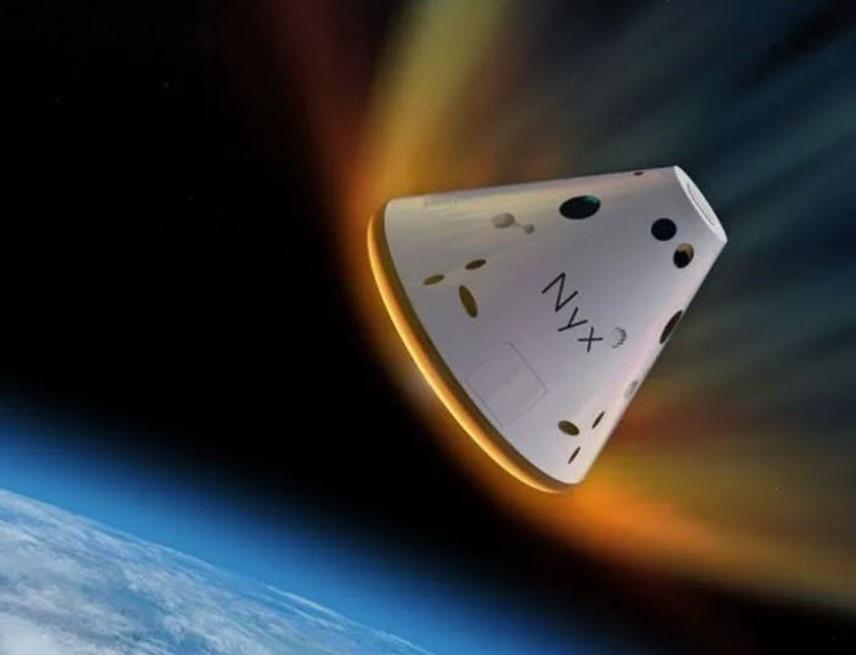
The Exploration Corporation was established in July 2021 by Hélène Huby and a group of aerospace experts. It took them only nine months to construct their first atmospheric re-entry prototype.
The second demonstrator being built by the startup is scheduled to take to the skies in 2024. And Nyx, the final vehicle, is expected in 2026.
“To catch the reader's attention, place an interesting sentence or quote from the story here.” Space Race 2.0 Page 66
In order to maintain space stations and carry out long-term exploration missions, it will launch goods into space.
Emerging applications of RPO include space tugs that may repair or transfer malfunctioning satellites or remove hazardous space debris. A group named “Confers”, is developing voluntary technical standards for commercial RPO’s, and it is comanaged by the Secure World Foundation.
Now on the U.S. side outside Space X, which now has a clear monopoly for the transport of astronauts to the ISS, the early demonstrations by Astroscale and Northrop with their servicing satellites, which were years in the making, show that, according to NASA statement, the “DART” cooperative RPO mission was a failure because the spacecraft had technical issues, collided with the target satellite, and was destroyed as a result.
In-orbit servicing and RPO’s are definitely not a walk in the park!
“To catch the reader's attention, place an interesting sentence or quote from the story here.” Space Race 2.0 Page 67
………………...
AI AND SPACE DEBRIS
Since Sputnik was first launched in 1957, space exploration has had a significant impact on how we live our everyday lives.
Nevertheless, at the same time, it has turned the area around the Earth into a massive landfill for waste of all kinds and forms, ranging from abandoned spacecraft and rocket stages to bolts and equipment misplaced by astronauts.
This waste is primarily concentrated in two areas around our planet: low Earth orbit, which is between 200 and 2000 kilometers above the surface, and geosynchronous Earth orbit, which is 36,000 kilometers away from the planet.
This waste may have been released during missions or resulted from breakups brought on by explosions and collisions.
There are currently thought to be 36,000 objects larger than ten centimeters in size (including only a small number of still operational satellites), 1 million objects between 1 and 10 centimeters in size, and 130 million objects smaller than one centimeter.
This accumulated trash has grown to alarming proportions and poses a risk of possibly devastating collisions with operating satellites and human missions because of their very high speed.
This has actually happened a number of times, including in 1996 when debris from an Ariane rocket disabled France's Cerise satellite and in 2009 when the American Iridium 33 spacecraft completely disintegrated after being hit by the very old Kosmos 2251, a former Russian spacecraft, at a staggering 42,000 km/h.
Satellite operators and space authorities now take the risks posed by space trash extremely seriously. Specialized crews keep a close eye on their craft and adjust the flight route trajectory to avoid the debris if there is a significant chance of impact. These kinds of operations have increased in frequency. For instance, the ISS has to be maneuvered to avoid a possible collision multiple times a year.
Yet the situation is growing worse, with more satellites and more junk created each year. There doesn't seem to be a quick fix in sight.
In this environment, it has become necessary to estimate risks as precisely as possible to minimize such interactions, while at the same time doing all we can to limit false alarms to a minimum, as avoidance processes are both lengthy and costly.
“To catch the reader's attention, place an interesting sentence or quote from the story here.” Space Race 2.0 Page 68
A highly quick and accurate method to estimate collision hazards has been developed by teams from the Laboratory for Analysis and Architecture of Systems (LAASCNRS) in cooperation with the LIP computer science laboratory.
The French Space Agency (CNES), which created its own algorithm to chase in 2016, is now using it to evaluate the risks to its satellites, and it has been shown to be quite successful.

So how precisely can an impact risk be assessed? The solution is to employ a database, mostly created by the U.S. space monitoring network, which determines the location of the biggest, most harmful debris, measuring above 10 cm.
This makes it feasible to project their orbits and anticipate their future positions to assess the likelihood of a collision.
Measurement errors by ground-based radars and telescopes, as well as the difficulty of accurately modeling uncertain trajectories with all the disturbances that affect the space environment, such as atmospheric friction in low Earth orbits, prevent the trajectories of objects as well as satellites from being known with accuracy a long time in advance.
This makes it feasible to project their orbits and anticipate their future positions to assess the likelihood of a collision.
“To catch the reader's attention, place an interesting sentence or quote from the story here.” Space Race 2.0 Page 69
Measurement errors by ground-based radars and telescopes, as well as the difficulty of accurately modeling uncertain trajectories with all the disturbances that affect the space environment, such as atmospheric friction in low Earth orbits, prevent the trajectories of objects as well as satellites from being known with accuracy a long time in advance.
In other words, the route of a space object may be conceptualized as being enclosed inside a tube that enlarges with increasing uncertainty as time progresses. So, estimating the chance of a collision requires figuring out if the two tubes will likely cross each other's route at a certain moment.
This concept has been accepted by the space industry, and a 1 in 10,000 cutoff point has been set for the likelihood at which an avoidance maneuver becomes essential.
The researchers employed symbolic-numerical computation, a mathematical approach that tries to increase the accuracy and efficiency of numerical computations performed on computers, to create their algorithm.
This approach has been included into the ASTERIA flight software created by CNES and used on the OPS-SAT experimental CubeSat by ESA since 2021.
The tests, which are performed on simulated collision instances rather than actual real-world collisions, showed how reliable the dedicated algorithm is.
It is intended that it will also be embedded in spacecrafts to be able to automatically analyze the probability of collision and, if required, calculate the avoidance maneuvers at each alarm as they continuously monitor their location and speed.
With the recent, extraordinary increase in launches, particularly into low Earth orbit, where congestion has become a concern, this issue is of the highest significance.
The continued deployment of mega-constellations by the private sector, such as the Starlink and OneWeb initiatives, will make the problem worse.
“To catch the reader's attention, place an interesting sentence or quote from the story here.” Space Race 2.0 Page 70
As a result, there will be a higher chance of running into trash, which will need more regular analysis. Thus, risk assessment processes will need to be expedited and custom algorithms – like the ones created by French researchers – are required. That is not all, however. It will be necessary to adapt present risk estimation techniques to prevent crashes. While we can now calculate the likelihood that a piece of debris may crash with an individual spacecraft, we are still unsure of how to represent the issue in the case of junk that may eventually meet a constellation of 1,000 satellites.
For those who want to spend a weekend as a tourist in space, as suggested by new space “tourism” companies, you should be aware that a fracture in capsule's windshield would be much worse than the identical incidence in your immaculate EV on Earth!

“To catch the reader's attention, place an interesting sentence or quote from the story here.” Space Race 2.0 Page 71
Map of every known piece of space debris orbiting Earth at different orbit position
FIRST SPACE FACTORY IN ORBIT
Inside orbital megacities, people may live, work, and produce in space. In 2019, Jeff Bezos' "vision," the man behind Blue Origin and Amazon, made this public. However there are a number of measures you must take before completing such a job.
The venture between the Franco-Luxembourg startup Space Cargo Unlimited and Thales Alenia Space (TAS),i the first private "floating space factory," complete with microgravity manufacturing and research capabilities, to be installed in low orbit between 350 and 400 kilometers from the Earth.
In accordance with the contract, TAS will serve as the prime contractor for the service module, which will stay in orbit and onto which the space factory, known as "REV1," would clip for missions lasting two to three months. After that, REV1 will separate from this module and go back to Earth.
View Video: https://youtu.be/iWvmqHXUtqM

“To catch the reader's attention, place an interesting sentence or quote from the story here.” Space Race 2.0 Page 72
This opens the door for completely democratizing access to space, with the goal of someday running a fleet of autonomous spacecraft. It will be employed for specialized missions, especially in the areas of biotechnology, pharmaceuticals, agriculture, and novel materials.
The "REV1" pressurized spacecraft is a genuine floating space factory. "REV1" will be able to generate the special lab settings and actual clean rooms required for this kind of study and production.
I find it quite intriguing to consider how the Chinese space agency could view this endeavor. What if they were to say, for what reason? Is this truly required?
But after some time of puzzlement, they would duplicate on their chalkboard and strive to improve upon it for the sake of their country's glory in space.
I will not take too long, so watch your back!
“To catch the reader's attention, place an interesting sentence or quote from the story here.” Space Race 2.0 Page 73
………………………….
GIANT RADIO TELESCOPE COMPETITION – AUSTRALIA VS CHINA
After 30 years of planning and a year and a half of preconstruction work, construction has started on the SKA-Mid array, which will be built in the South African Karoo desert, and the SKA-Low array, to be built in Western Australia, north of Perth.
With 197 dishes, each about 15 meters in diameter, the SKA-Mid array in Karoo will search the sky for sources of radio waves in the middle-frequency region, 350 MHz to 15.4 GHz; meanwhile 131,072 dipole antennas will be used by the SKA-Low array in Australia to find radio waves with frequencies between 50 and 350 MHz.

The telescopes will be finished by the end of this decade: however, scientists anticipate being able to use part of the antennas immediately after they are built. The telescopes will cover an area of one square kilometer. Six SKA-Low stations and the first four SKA-Mid dishes will be able to operate as one telescope.
The telescope's construction cost of Euros 1.3 billion and the €0.7 billion needed for the first ten years of operations were funded jointly by the 16 nations that make up the SKA Observatory, headquartered in the UK. Astronomers will use the telescope for at least 50 years. View
“To catch the reader's attention, place an interesting sentence or quote from the story here.” Space Race 2.0 Page 74
https://youtu.be/8BBoDw2qVD0
China responded with a solar telescope that was not quite on par technically and didn't have the same observational goals, but which was still three times larger than their Western competitors/colleagues.
In November 2022, China finished building the greatest collection of telescopes in the world, dedicated to studying the Sun and how its activity impacts the Earth.
The Daocheng Solar Radio Telescope (DSRT) is a circle with circumference of 3km on a plateau in the southwest Chinese province of Sichuan.
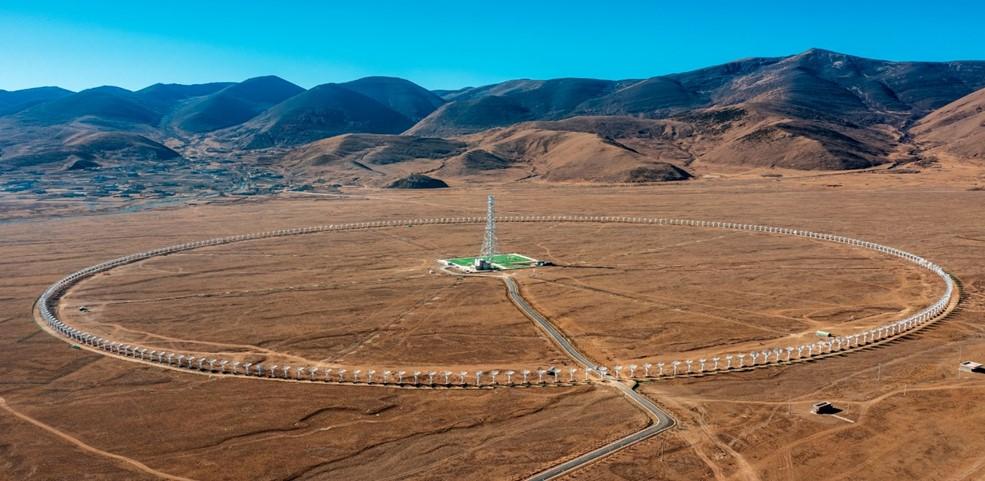
The main objective of DSRT is to observe solar flares and coronal mass ejections (CMEs), which overwhelm electronics, interfere with communications, and cause havoc on and above Earth.
When directed at Earth, CMEs, which are brought on by realignments in the magnetic field of the star that take place in sunspots, can endanger power grids, telecommunications, satellites in orbit, and even the safety of astronauts on board the ISS and China's recently completed Tiangong space station.
When alignment and joint testing are finished, the gigantic array will begin pilot operations in June 2023.
Ding Mingde, a solar physicist at Nanjing University, emphasized the significance of international collaboration in this field and stated that having observatories in China would also give significant data on solar events that are not visible to telescopes in other time zones.
Wishful thinking by novice scholars who aren't familiar with Astropolitics, or otherwise?
“To catch the reader's attention, place an interesting sentence or quote from the story here.” Space Race 2.0 Page 75
ROBOTS Vs ASTRONAUTS
How much are humans needed in space? How badly do we want their presence?
The triumph of human ingenuity and engineering is embodied by astronauts. Their work has provided insight into the challenges and opportunities presented by leaving our hospitable planet.
Their existence suggests that the nations or organizations who deployed them onto a planet’s ground have ownership rights per se on any Solar System objects.
Young people are inspired by astronauts to pursue professions in science and they help to further knowledge of the universe.
But robots can do largely better than humans in terms of exploration at a far cheaper cost and without endangering human life.
This claim, which was previously a futuristic prophecy, is now a fact, and robot explorers will keep becoming better and better while humans stay pretty-much the same.
Nobody suggested that an automated explorer might have completed this accomplishment more than 50 years ago, when the first geologist to visit the Moon unexpectedly discovered odd orange soil (possibly a residue of previously undetected volcanic activity).
Our current Mars rover, one of a series of orbiters and landers, is semi-autonomous and equipped with cameras and other sensors to investigate the planet's surface. Unlike earlier rovers, it can navigate past barriers.
The astronauts have not gone any farther than low Earth orbit since Apollo 17 departed the Moon in 1972.
The Hubble Space Telescope's five maintenance trips, which first rescued the enormous equipment from being rendered unusable and then prolonged its life by decades by delivering updated cameras and other systems, are by far astronauts' greatest accomplishment in this field.
Astrophysicists have now succeeded in sending all their brand-new space-based observatories to locations that are four times further away from the Moon than the Moon itself (the Lagrange point), where the James Webb Space Telescope is getting ready to examine a variety of cosmic objects.
All the planets of the Sun, including the former planet Pluto, have been visited by our robot explorers, along with two comets and an asteroid.
“To catch the reader's attention, place an interesting sentence or quote from the story here.” Space Race 2.0 Page 76
They have collected vast amounts of data about these planets and their moons, most notably Jupiter's Europa and Saturn's Enceladus, where oceans under an icy crust may contain unusual forms of life.
Our robot ambassadors' capabilities and the significance of their scientific findings will only grow in the wake of upcoming missions from the US, the ESA, China, Japan, India, and Russia.

“To catch the reader's attention, place an interesting Space Race 2.0 Page 77
Each of these flights has cost far less than a single human-manned journey, which is still impossible for the foreseeable future for all destinations other than the Moon and Mars.
Why then do so many individuals think that human beings rather than robots should explore space? Well, these attitudes are encouraged by both emotional and financial causes.
First, we see exploration as involving the direct participation of individuals, a tradition that is a significant contributing component to the attitude.
The second is engagement: we connect to people instinctively a lot more than we do to robots. (Though with AI androids ready to take over at any moment, it is at least temporary).
The third is adventure: the challenges and risks associated with human discovery create a dramatic tension that has always drawn our attention.
Ownership brings with it a desire for wealth. From a rare isotope of helium (for nuclear fusion) to the rare-earth elements, available from only a few terrestrial locations (primarily in China), all have become essential for products ranging from cell phones to electric cars to fighter aircraft.
They are rare and useful materials that entrepreneurs dream of obtaining despite the enormous distances to be traveled.
Surprisingly, the most viable targets for such mining are several metal-rich asteroids with orbits that bring them rather near to Earth, with the exception of helium-3 buried in lunar soil.
Human space missions will continue for the foreseeable future at least 20 years. We should all support these courageous pioneers while also understanding that— without putting human lives in danger robots might make scientific advancements, construct massive buildings, and create the space-based technology we use every day more efficiently and for a much lower cost.
“To catch the reader's attention, place an interesting sentence or quote from the story here.” Space Race 2.0 Page 78
…………………...
LAST MINUTE – NASA REVEAL NEW SPACE SUIT
The newest version of the spacesuit astronauts will use on the moon's surface when the Artemis III mission brings the first Americans there since 1972 was unveiled on March 15 by NASA and Axiom Space.
The new Axiom Exploration Extravehicular Mobility Unit, or xEMU, is a vast improvement over the traditional EVA suits of the Apollo period and will make bunny hopping on the lunar surface much simpler.
The xEMU was first addressed by NASA in public in late 2019, when they already had a functioning version that was ready to be improved and put into use.
The purpose of this suit is for lengthy periods of harsh vacuum and dangerous situations; nevertheless, astronauts won't always be wearing it. For in-vehicle operations, there is another suit that can be swiftly sealed in the event of depressurization.
In order to reflect heat and shield astronauts from very high temperatures, a spacesuit worn on the Moon must be white. At the moment, a cover layer is being employed only for aesthetic reasons to hide the suit's exclusive design.
In order to develop this unique cover layer utilizing the Axiom Space logo and brand colors, costume designer Esther Marquis from the Apple TV+ series "For All Mankind" worked in collaboration with Axiom Space.
“To catch the reader's attention, place an interesting sentence or quote from the story here.” Space Race 2.0 Page 79
…………………………
“To catch the reader's attention, place an interesting sentence or quote from the story here.”

Space Race 2.0 Page 80
Space Conquest idealization PRC propaganda poster
“To catch the reader's attention, place an interesting sentence or quote from the story here.”

Space Race 2.0 Page 81



















































